French country kitchens enchant because they balance rustic honesty with quiet sophistication, folding weathered timbers, creamy paint, and heirloom cookware into spaces that feel collected over generations. Designers point to five touchstones—soft neutral palettes, tactile natural materials, vintage-inspired fittings, curated open storage, and a welcoming lived-in layout—as the thread that ties every variation together. The following twenty ideas translate those touchstones into focused, achievable moves, each one ready to infuse your own French Country Kitchen with Provençal warmth and everyday practicality.
1. Warm Neutral Color Palette Defines the French Country Kitchen Mood
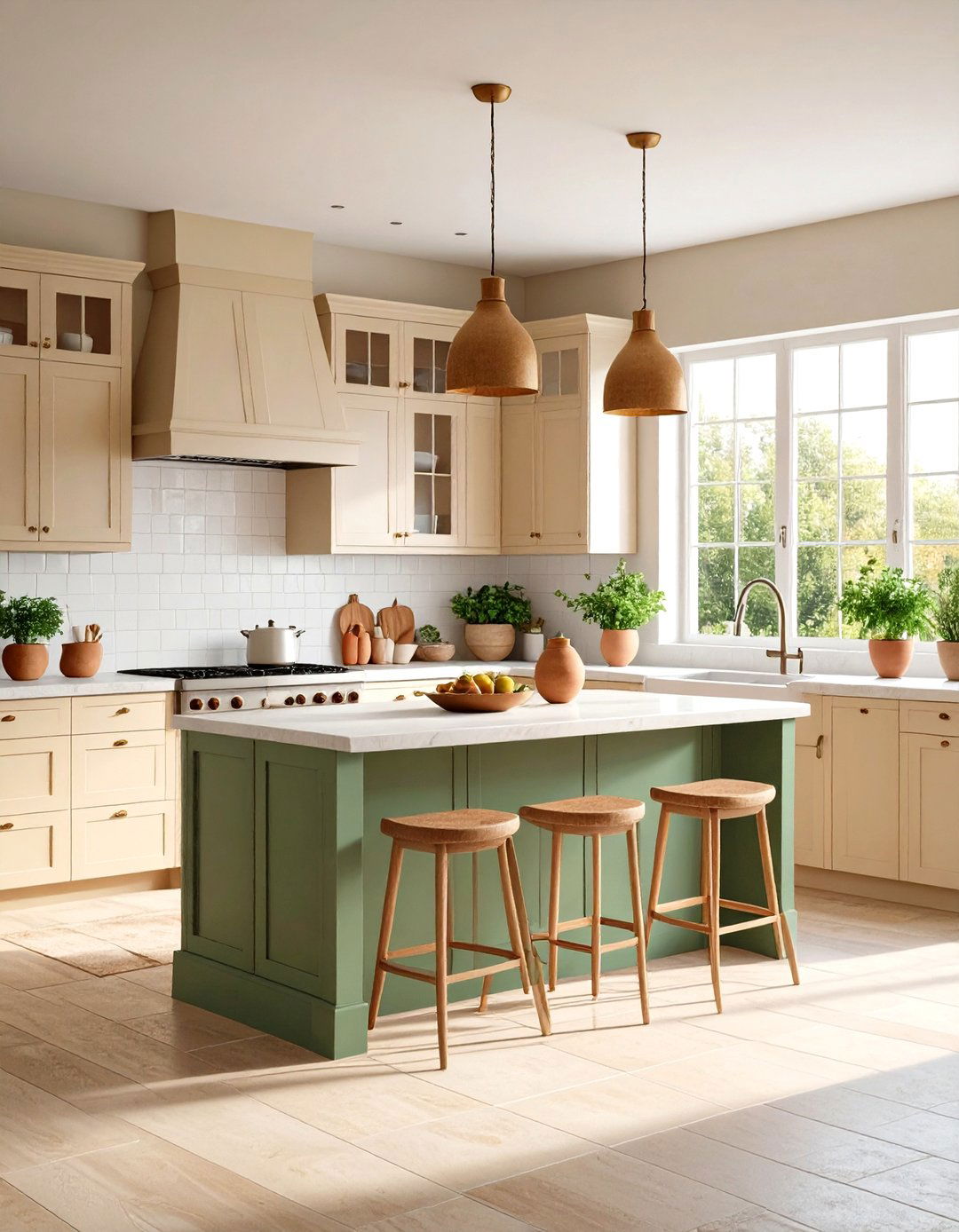
A sun-washed color scheme is the gentlest way to evoke the French countryside. Begin with pale limestone whites, warm cream, and the dusty taupes paint experts recommend for highlighting vintage furniture without overwhelming delicate detailing. Layer barely-there sage or powdery blue on islands or pantry doors to echo Provençal herbs and sky, then punctuate with terracotta pottery for contrast. Because these hues sit firmly in the mid-tone range, they soften hard surfaces and camouflage cooking splatters—essential in a hardworking French Country Kitchen. Finish the scheme with matte walls and subtle glaze on cabinetry so light bounces softly rather than glaring off high gloss.
2. Rustic Wood Beams Crown a French Country Kitchen Ceiling
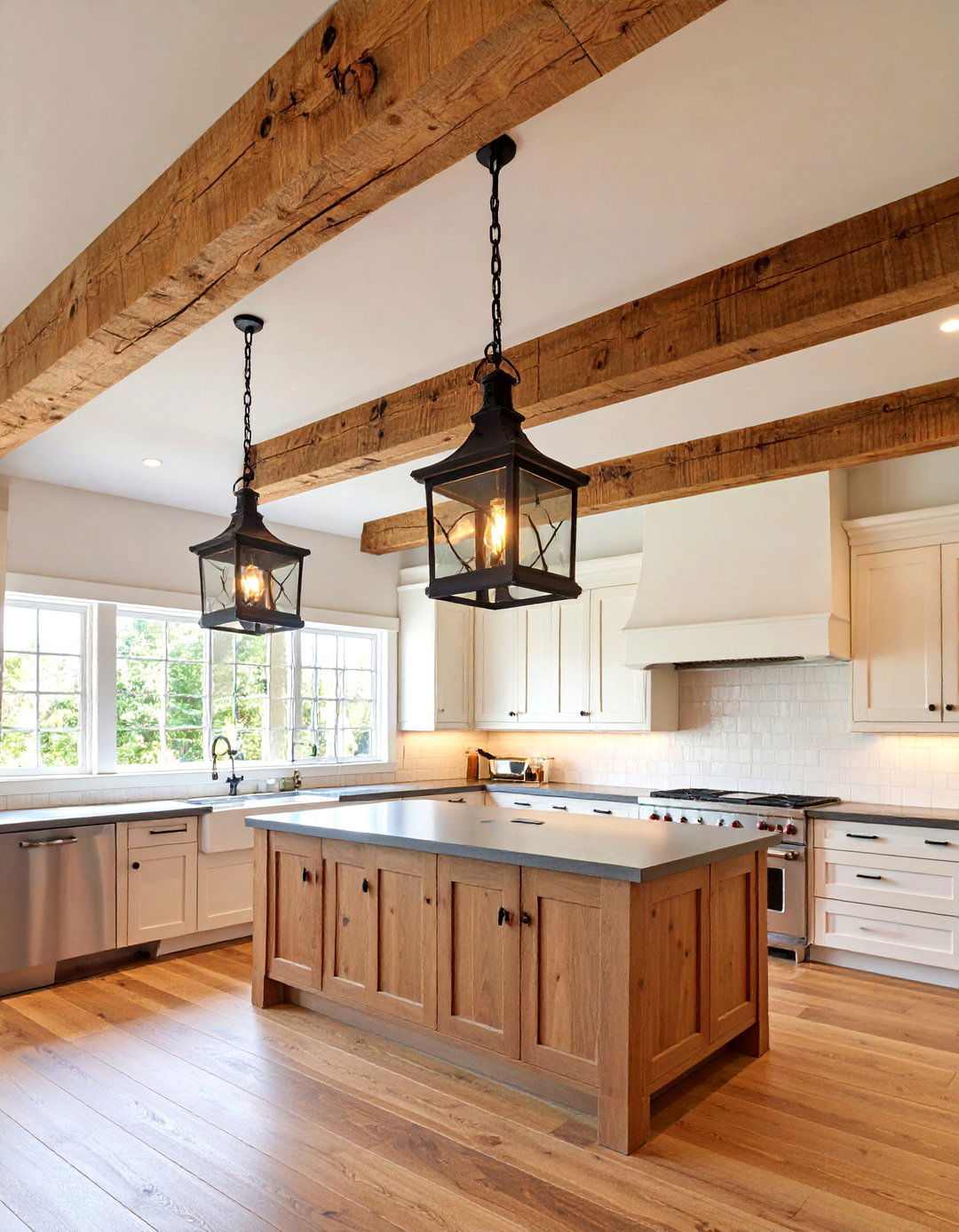
Nothing telegraphs age and authenticity faster than exposed ceiling beams. With minimal structural work you can sheath existing joists in reclaimed oak boards or add non-load-bearing faux beams stained a mellow walnut. The visual weight drops the ceiling just enough to create intimacy, while the texture plays beautifully against polished marble or glazed tiles below. Keep surrounding plaster slightly uneven so the beams feel integral, not tacked on. When styling a French Country Kitchen, leave beams untreated or finish with liming wax—shiny polyurethane belongs elsewhere. Accent their rhythm with wrought-iron lanterns hung on simple black chains.
3. Limestone or Terracotta Floors Anchor the French Country Kitchen
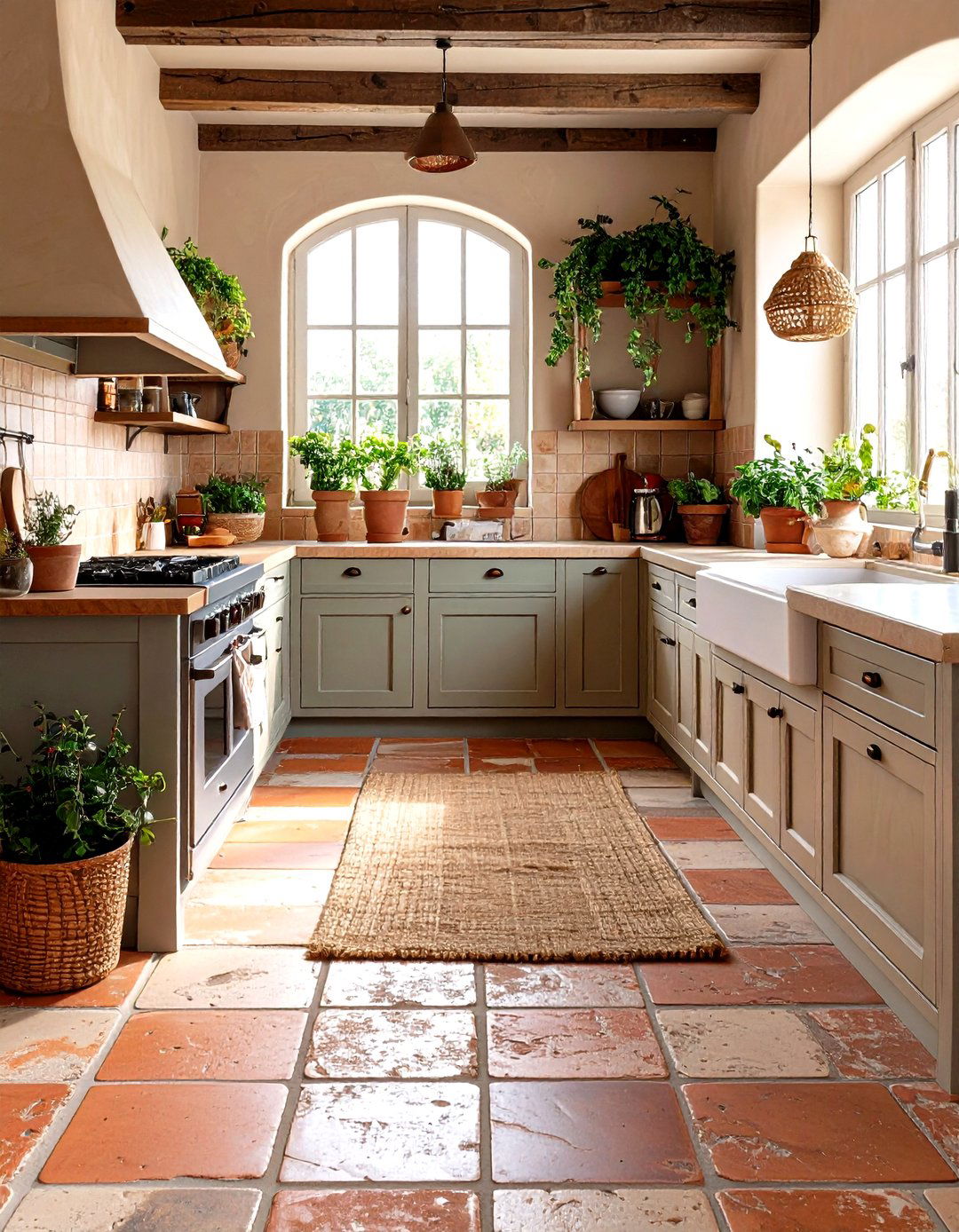
Underfoot, stone or clay sets the tone. Aged French limestone pavers in soft greige instantly ground a French Country Kitchen, especially when laid in random lengths with tight grout joints for a centuries-old look. If stone feels too cool, handmade terracotta tiles—herringbone or square—add gingery warmth and disguise crumbs like a dream. Both materials pair seamlessly with cream cabinetry, letting copper pans and produce baskets shine as accents. Seal porous tiles with breathable, matte penetrating sealer so patina develops naturally rather than dark stains. Slip small sisal runners by the sink to soften standing fatigue without hiding the floor’s character.
4. A Freestanding French Range Becomes the French Country Kitchen Centrepiece
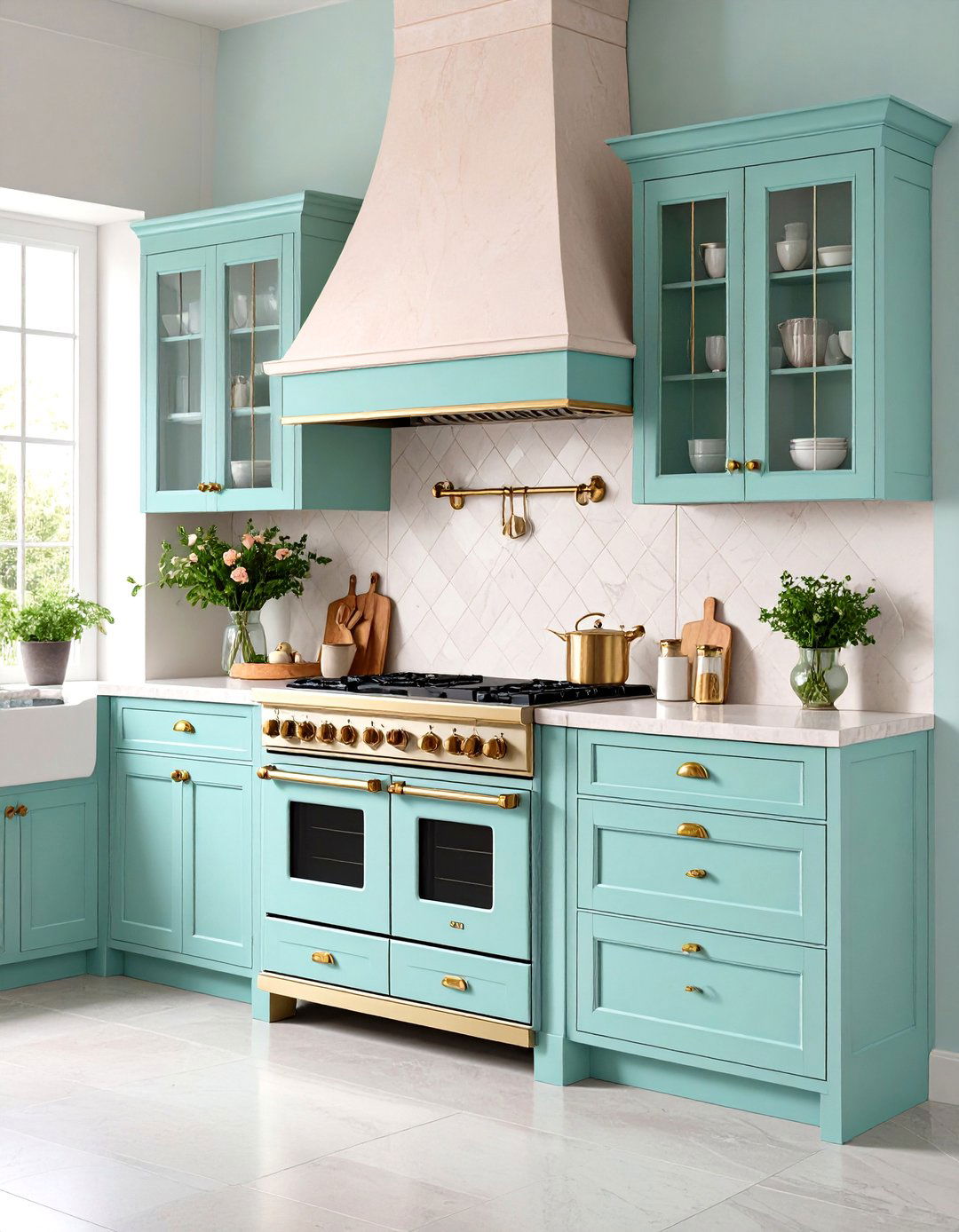
Consider the range the kitchen’s “hearth.” Classic French makers offer nearly sixty enamel shades and multiple brass trim options, making each cooker a jewel box focal point. Position it on the longest wall, flank with slender spice drawers, and top with a stone or plaster hood for a built-in fireplace feel. Multifuel ovens marry modern performance with the romance of softly glowing knobs. Because a French range is as sculptural as functional, let cabinetry step back in quieter hues. In open-concept layouts, align the range with a window; brass hinges gleaming in natural light underscore the French Country Kitchen’s crafted soul.
5. Butler-Style Farmhouse Sink Grounds the French Country Kitchen Cleanup Zone

A deep fireclay “évier” captures both history and practicality. The traditional apron front relieves wrist strain by bringing the basin closer, while its soft curves temper angular cabinetry. Pair with a simple bridge faucet in polished nickel for subtle sparkle or unlacquered brass if you adore living finishes. Dress the wall behind in vertical beadboard painted the same color as cabinetry so the heavy sink feels nestled. In a small French Country Kitchen, let the sink skirt wrap extra plumbing in striped linen for texture and hidden storage—a nod to humble Provençal cottages.
6. Copper Cookware Rails Enrich a French Country Kitchen Wall
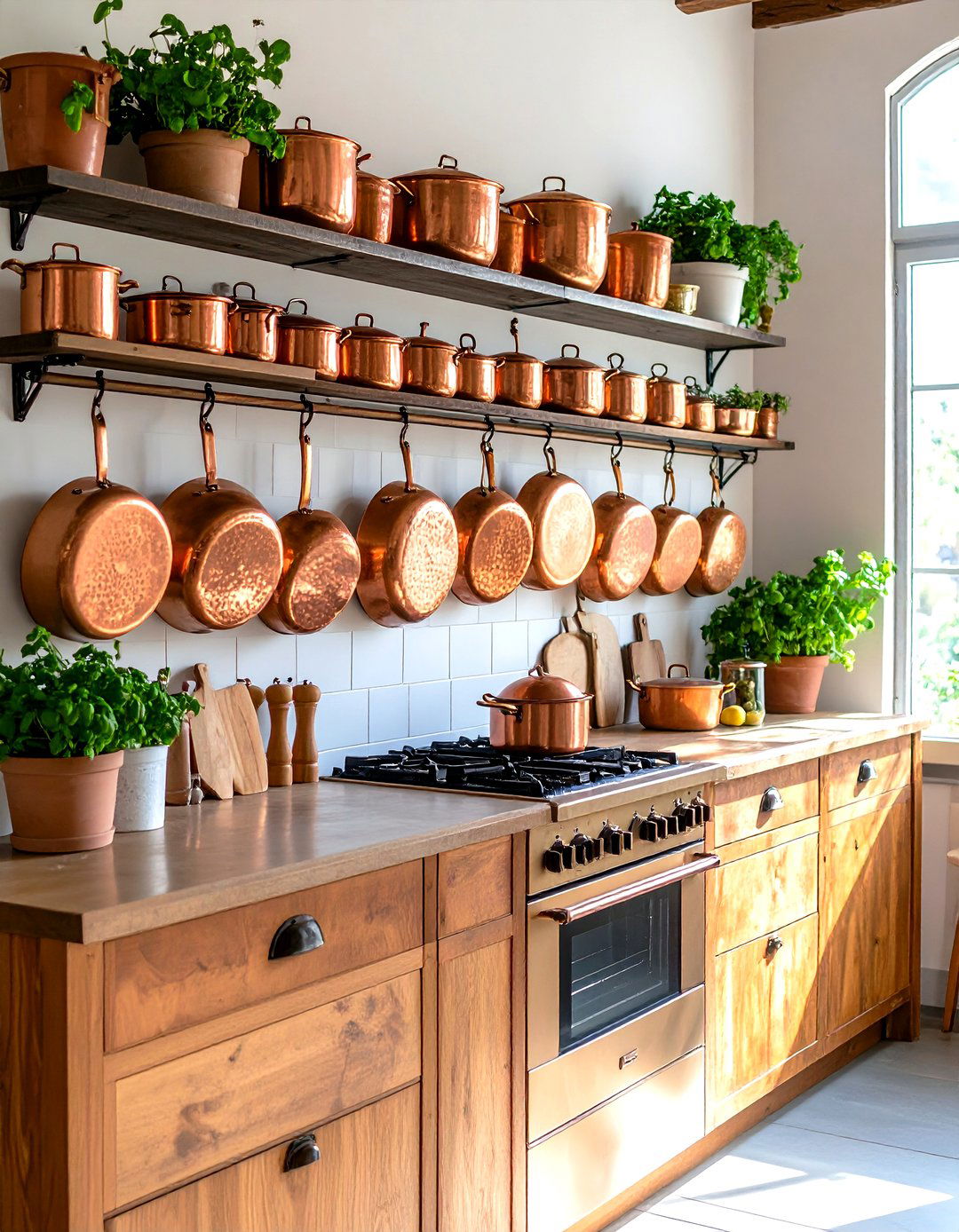
Rows of hand-hammered copper pots gleaming on a wall-mounted rail deliver instant warmth and story. Designers love the patina that deepens with every sauté, turning utensils into artwork. Fix the rail where sunlight can graze the metal—perhaps between two windows—or mount inside a chimney breast over the range. For authenticity, mix shiny saucepan sets with dented flea-market finds; contrast keeps a French Country Kitchen from feeling staged. A tiny dab of lemon and salt polishes display pieces, but leave interiors seasoned to preserve their naturally non-stick surfaces.
7. Vintage Lantern Pendants Light the French Country Kitchen
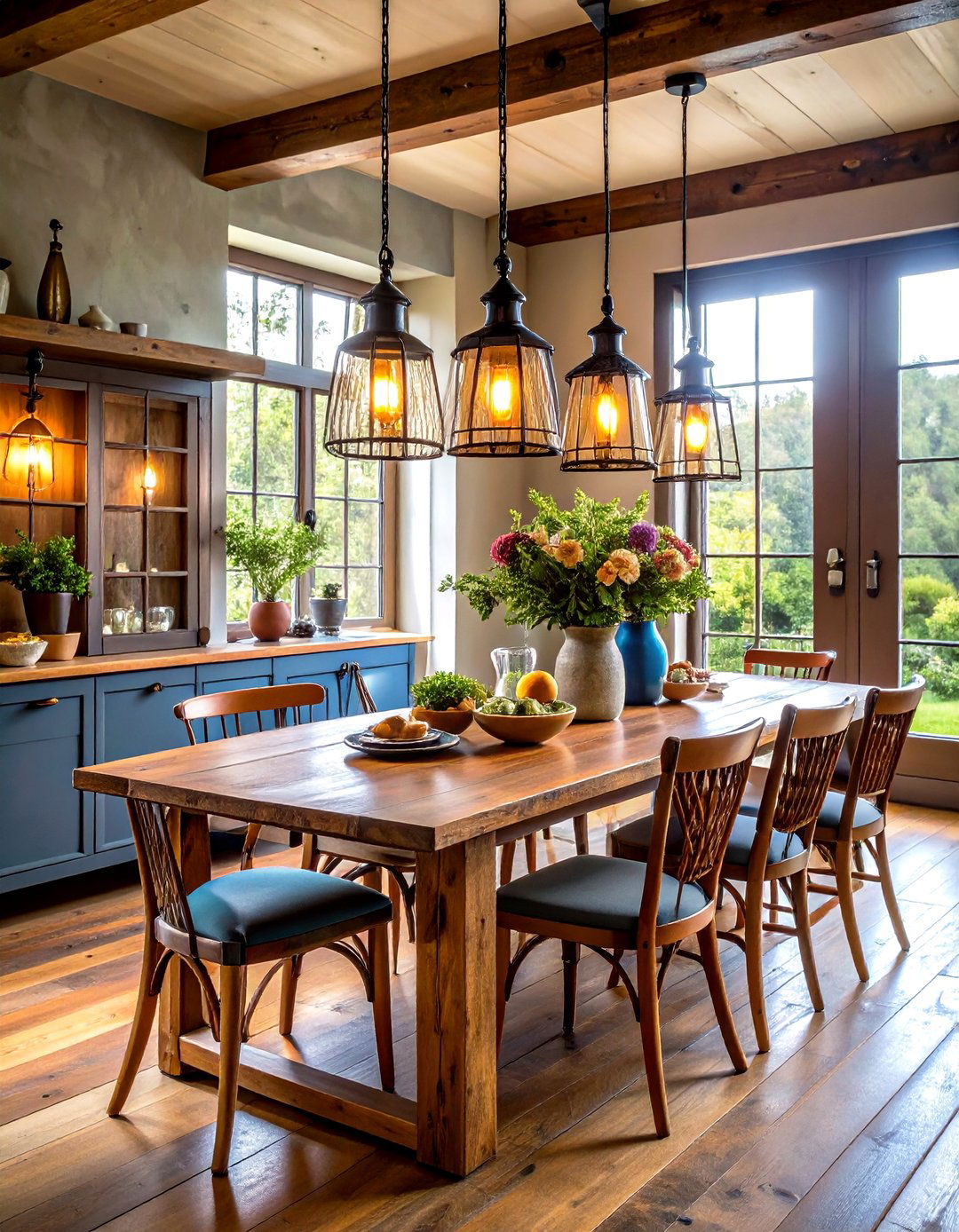
Gas-style lanterns, now electrified, cast a gentle, diffuse glow perfect for long suppers. Choose iron frames with seed-glass panels or warm brass cages, then suspend low over a rustic table to echo courtyard cafés. Balance their height with recessed spots aimed at prep zones so chopping remains safe. Lanterns also introduce vertical interest near those timber beams, pulling the eye upward and emphasizing volume. When possible, install wall sconces in matching finishes beside plate racks; layered lighting prevents harsh shadows and supports the intimate ambiance that defines a French Country Kitchen.
8. Marble and Butcher Block Countertops Honor French Country Kitchen Craft
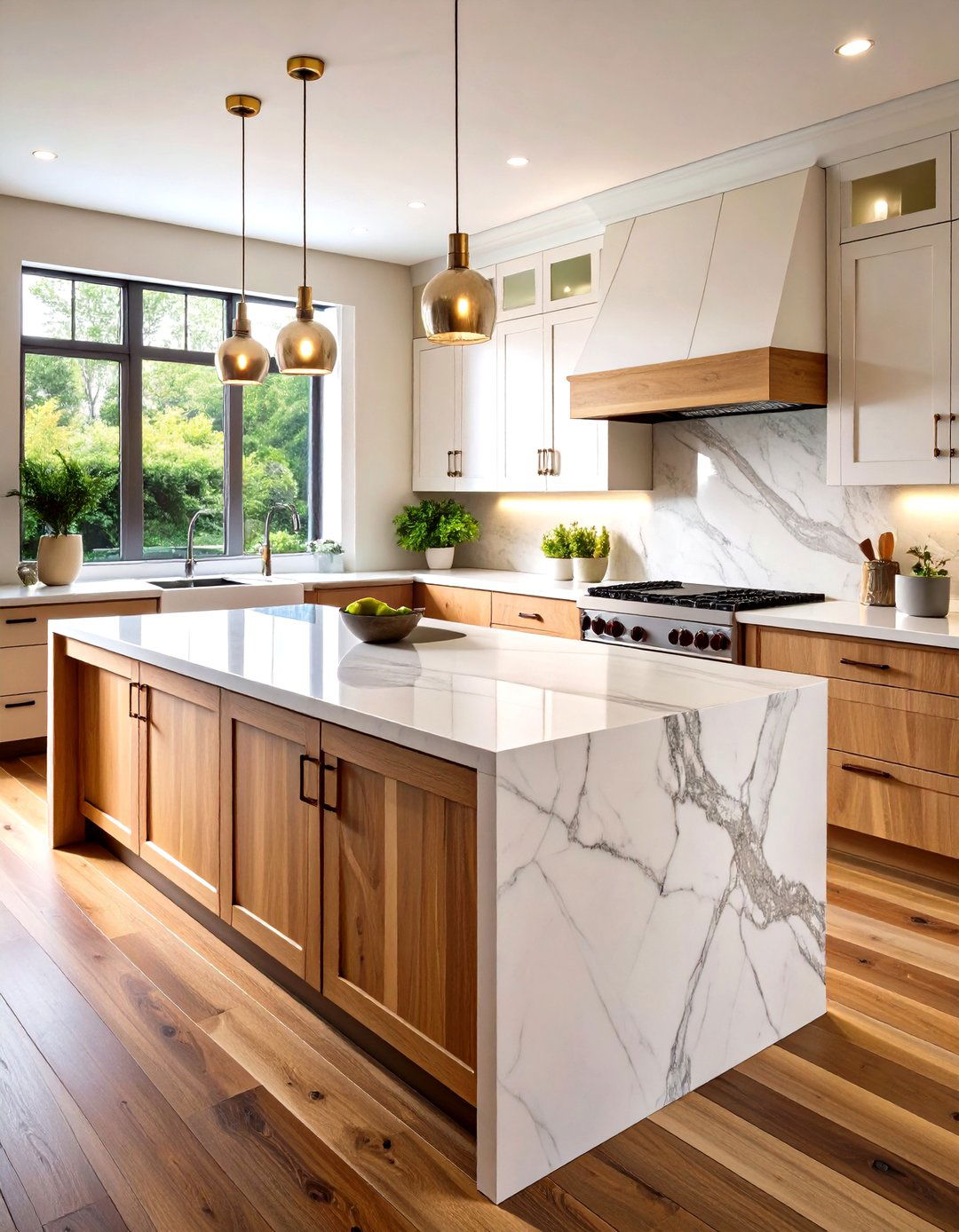
Contrast is key: cool honed marble pastry slabs coexist with sturdy oak butcher blocks, reflecting the multi-tasking of traditional farm kitchens. The marble handles pastry and cheese with finesse, while butcher block welcomes bread kneading without dulling knives. Keep marble edges gently eased to avoid chips; oil wooden tops monthly with food-grade mineral oil so they darken gracefully. By splitting surfaces, you control budget—stone only where necessary—and introduce subtle pattern variation. This blend of refined and rugged underlines the French Country Kitchen philosophy that beauty and utility should meet at every turn.
9. Open Shelving Shows Personality in a French Country Kitchen
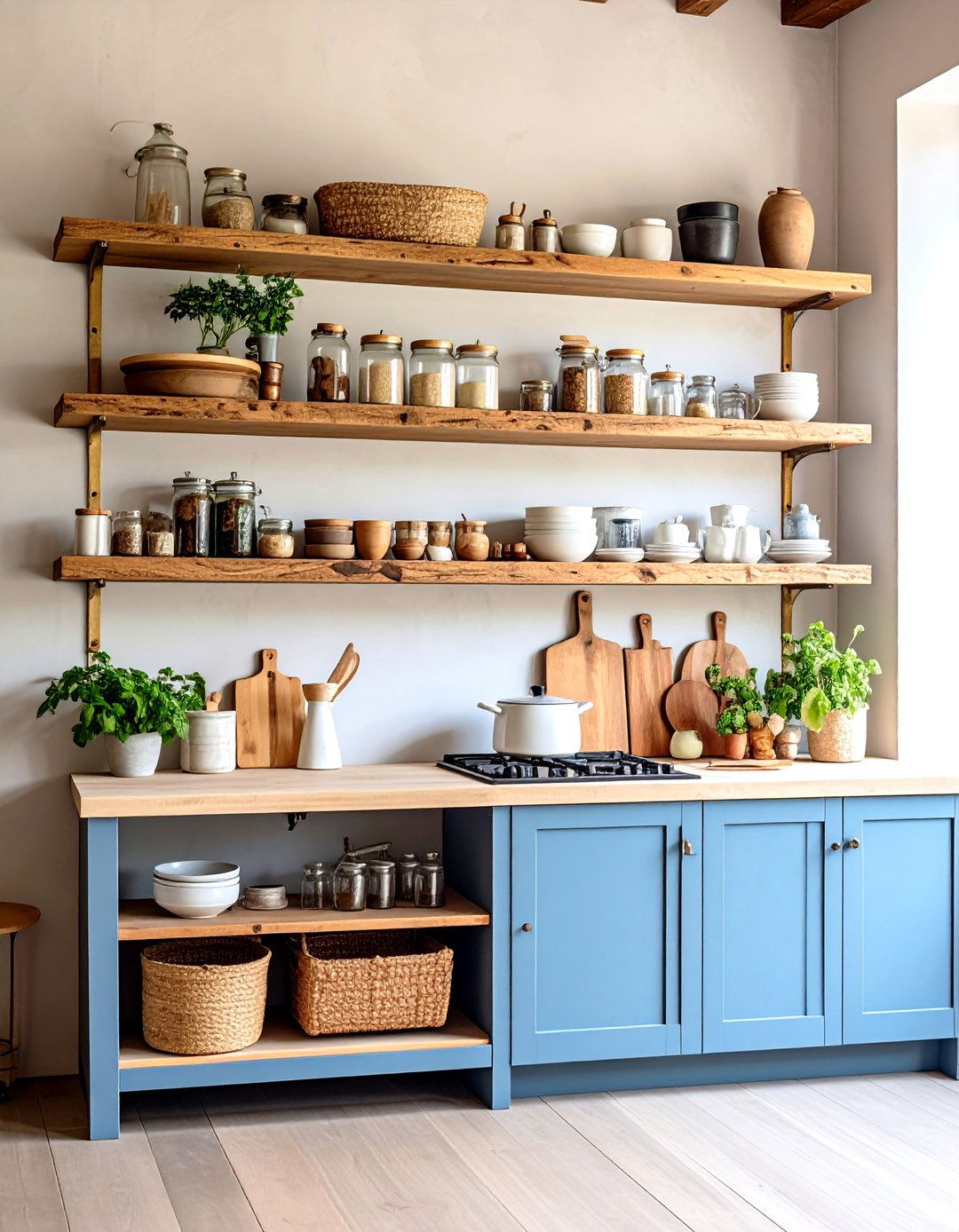
Designers who once dismissed open shelves now embrace them for showcasing everyday ceramics and vintage pitchers. In a French Country Kitchen, float rough-sawn oak planks against a plaster wall, balancing fine china with burlap-wrapped jars of pulses. Limit runs to two tiers so lines remain airy rather than cluttered. If dust worries you, reserve shelves for pieces rotated often—coffee mugs, mixing bowls, copper colanders. The strategy invites you to curate color stories seasonally, while closed cabinets below hide less attractive gadgets. Consider tiny brass gallery rails to secure plates on earthquake-prone walls.
10. Reclaimed Farm Table Replaces the Island in a French Country Kitchen
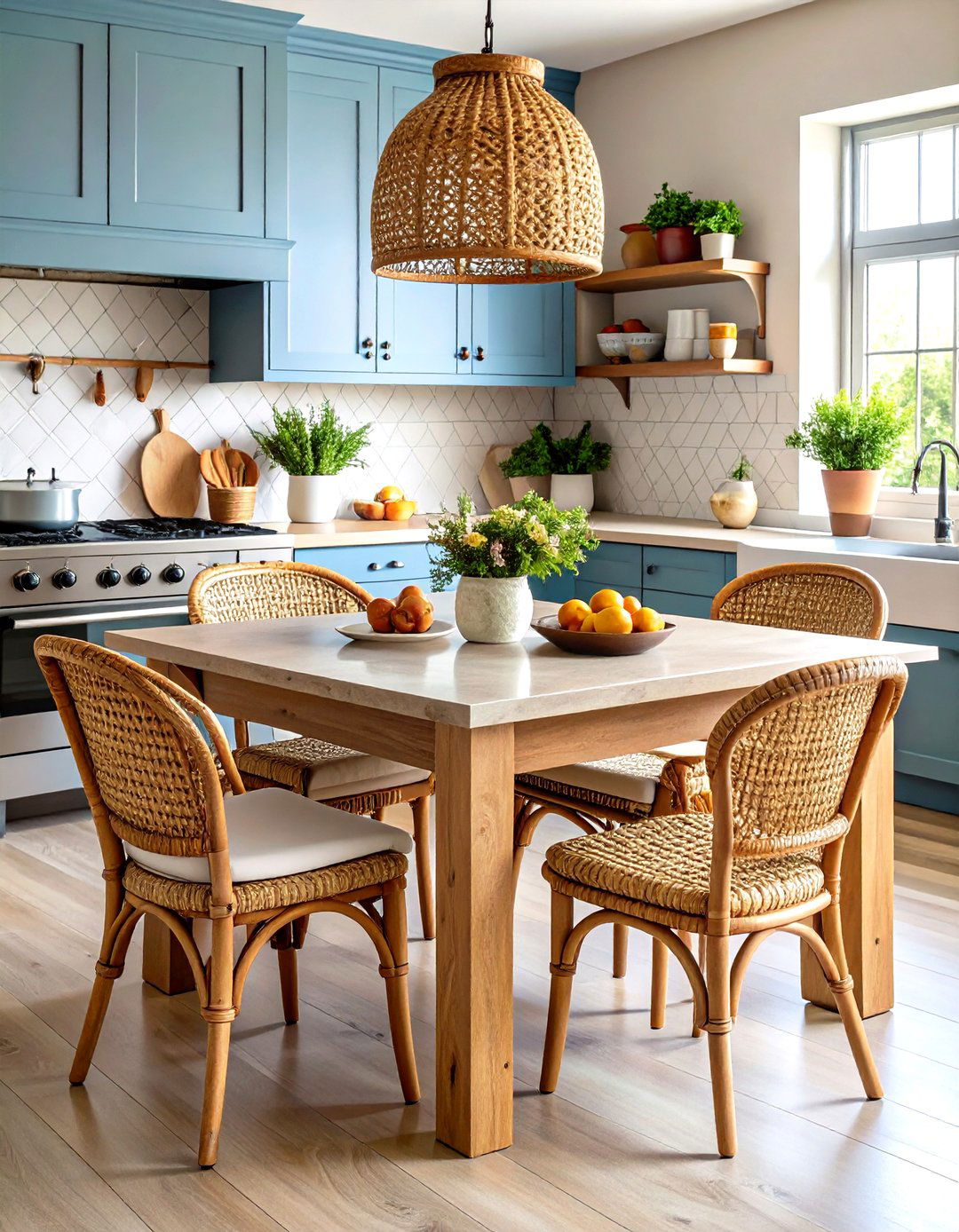
Unlike modern islands, a generous farm table invites both prep and conversation, its scuffs chronicling family meals. Bring in an antique pine or oak trestle table, then tuck wicker-seated chairs or low stools beneath for flexibility. The open base keeps sightlines clear, aiding smaller rooms. For added function, slide a slim marble pastry board atop one end and store baskets of produce underneath. That mix of informal dining and utility perfectly captures the relaxed rhythm of a French Country Kitchen, where cooking, homework, and gossip coexist without boundaries.
11. Cafe Curtains Soften the French Country Kitchen Windows
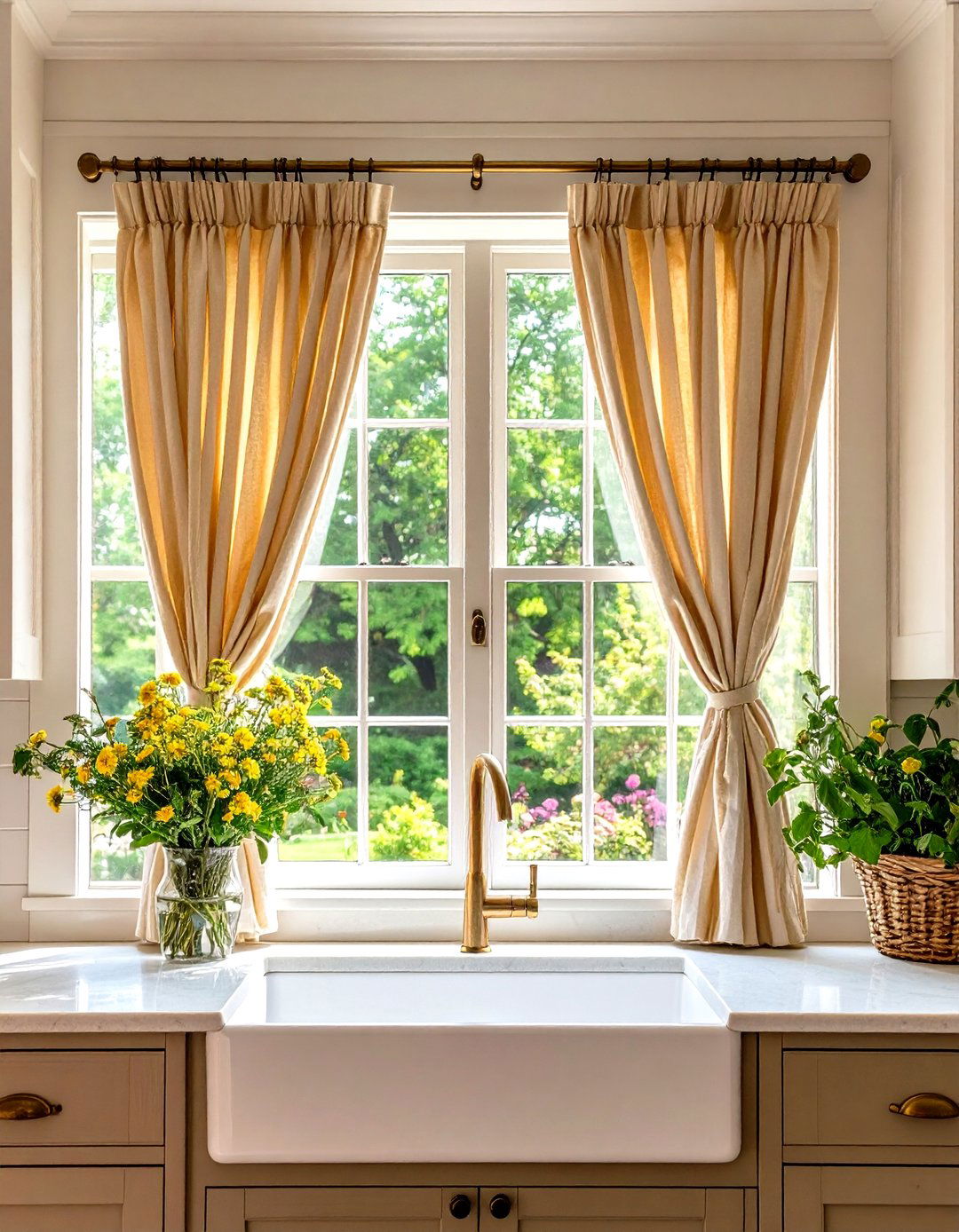
Half-height café panels filter glare while preserving a garden view, lending bistro charm. Linen or cotton keep drape casual; fine ticking stripe or petite gingham feel authentically rural. Mount rods midway on the frame so billowing fabric moves with the breeze, echoing market awnings in Provence. Because these curtains consume little yardage, splurge on quality fabric and brass café rods that complement faucet hardware. They also conceal under-sink clutter if you’ve chosen an open base cabinet. Within a French Country Kitchen, their flutter echoes curtains you’d spot in a village patisserie at noon.
12. Provencal Prints Add Story to a French Country Kitchen Textile Scheme

Add personality by layering toile or block-printed Indiennes on seat cushions, runners, and pot holders. Such patterns—scenes of pastoral life or vivid florals—originate from 18-century French mills and remain design icons. Keep scale moderate so motifs don’t overpower cabinetry; repeat one accent color from the print on enamel hardware or interior cabinet backs for subtle cohesion. Machine-washable cottons earn bonus points for real-world spills. When styling a French Country Kitchen for guests, drape a toile tablecloth over the farm table and top with a single wildflower bouquet—no complicated centerpieces required.
13. Unlacquered Brass Hardware Gives Patina to the French Country Kitchen
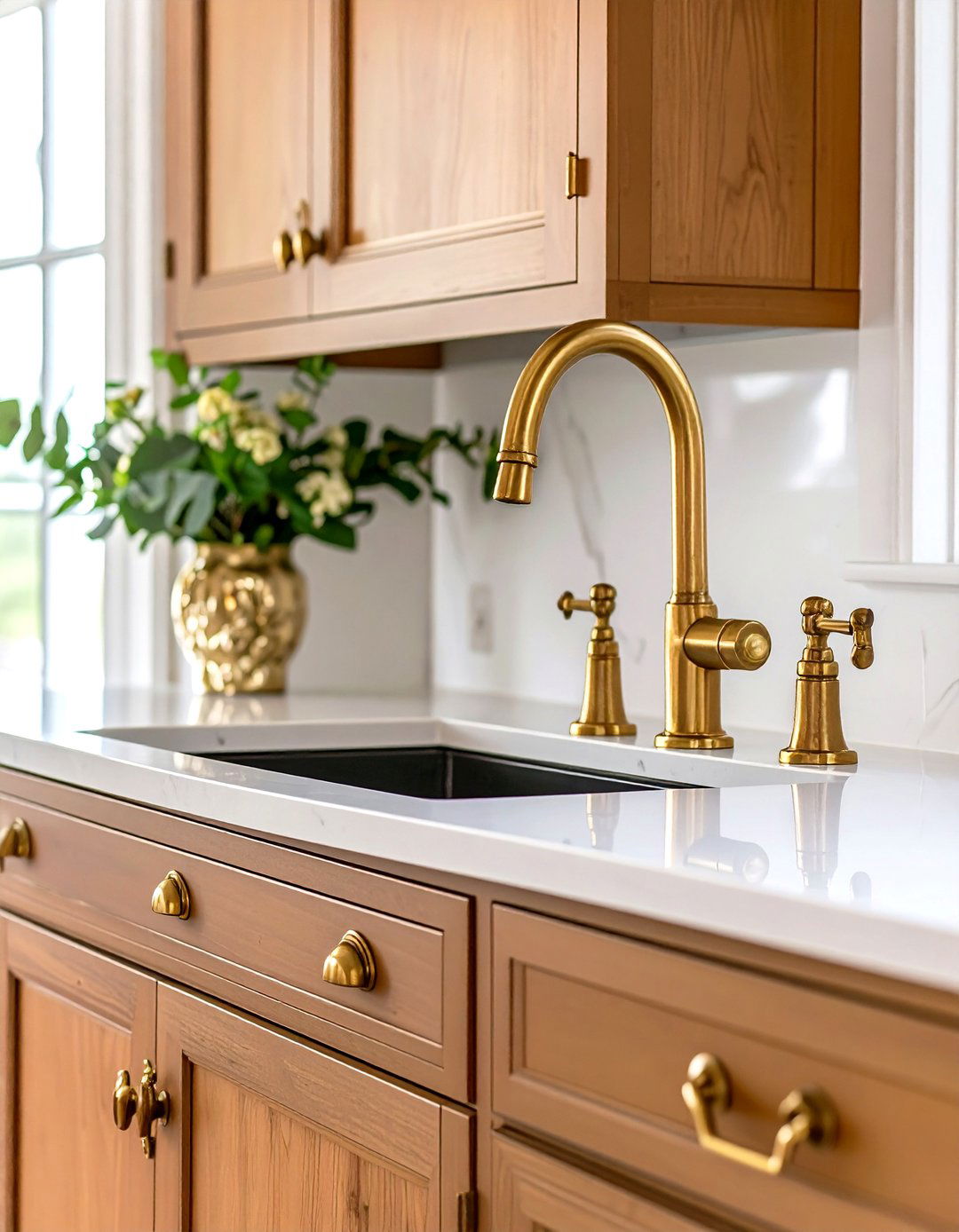
Living-finish brass taps and pulls darken toward caramel within weeks, lending centuries-old credibility even to new cabinetry. Designers hail its comeback for ease of maintenance and deep character. Pair a bridge-style faucet with cross handles, then echo the metal on bin pulls and ice-box latches. If budgets demand mixing metals, keep polished nickel appliances but limit brass to high-touch points. Natural oxidation means every French Country Kitchen develops unique highlights, allowing homeowners to literally watch memories form on their hardware.
14. Gilded Statement Hood Elevates the French Country Kitchen Range Wall
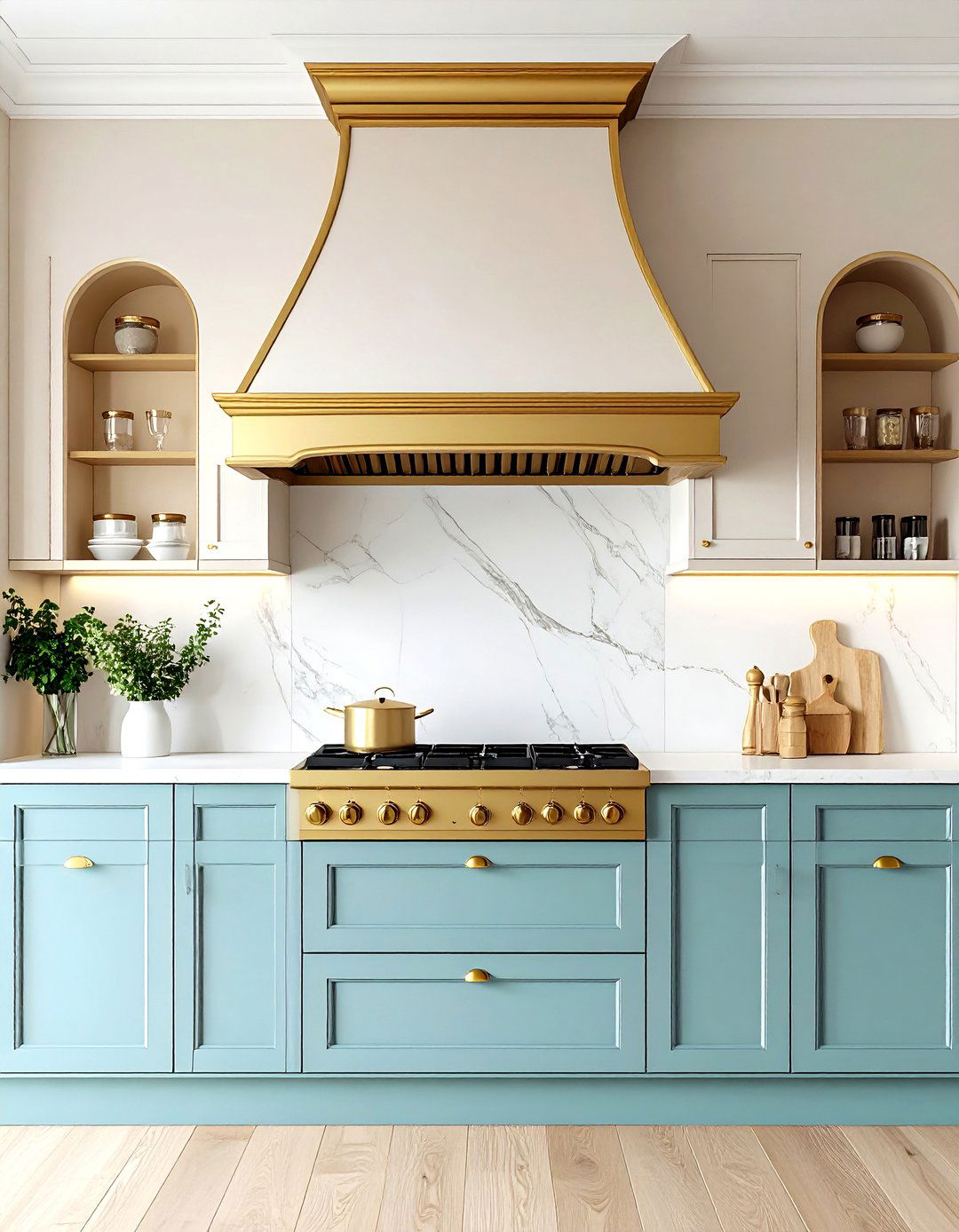
Beyond structural necessity, a sculptural hood can crown the range like French château armor. Molding wrapped in hand-applied gilt or trimmed with patinated brass frames the cooker while catching candlelight at night. For balance, flank with simple open spice niches rather than heavy uppers. Finish the plaster body in the same neutral as walls so metallic trim stands out without overwhelming. Inside, a modern insert handles ventilation quietly, letting aesthetics dominate. Such a hood turns everyday sautéing into theater—an essential sense of occasion in a French Country Kitchen.
15. Checkerboard Tiles Pattern a French Country Kitchen Backdrop
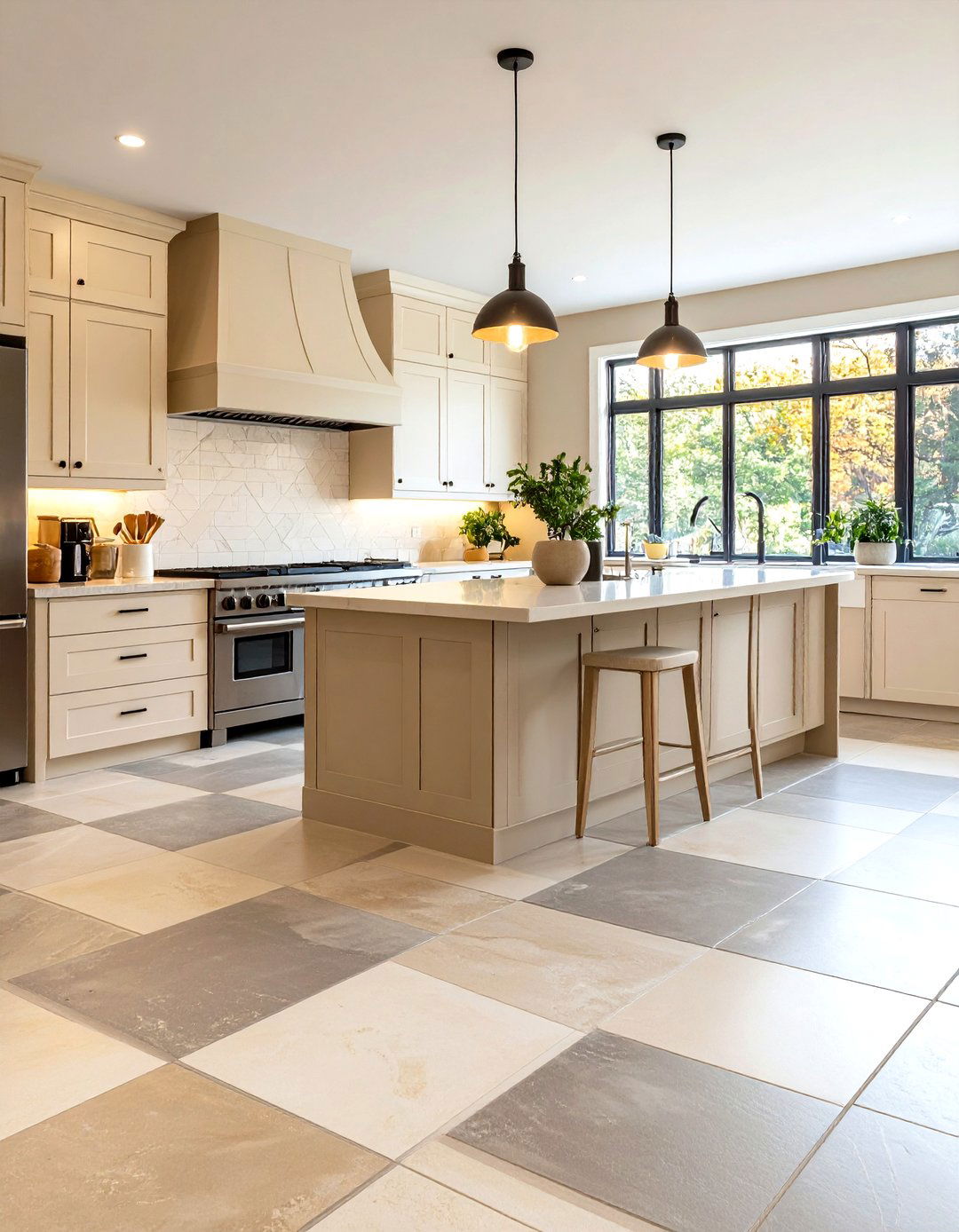
Timeless black-and-white or sandstone-and-ivory checkerboard instantly suggests European ancestry. Recent design revivals prove the motif’s versatility across classic and eclectic spaces. Lay large squares diagonally on floors to widen narrow rooms, or scale down to four-inch marble checks for a backsplash behind open shelves. Seal grout in a warm grey to hide stains. When the pattern vies with busy counters, zone it to the dining alcove only—clever visual zoning that still infuses the entire French Country Kitchen with pattern play.
16. Antique Hutch Delivers Display Space in a French Country Kitchen
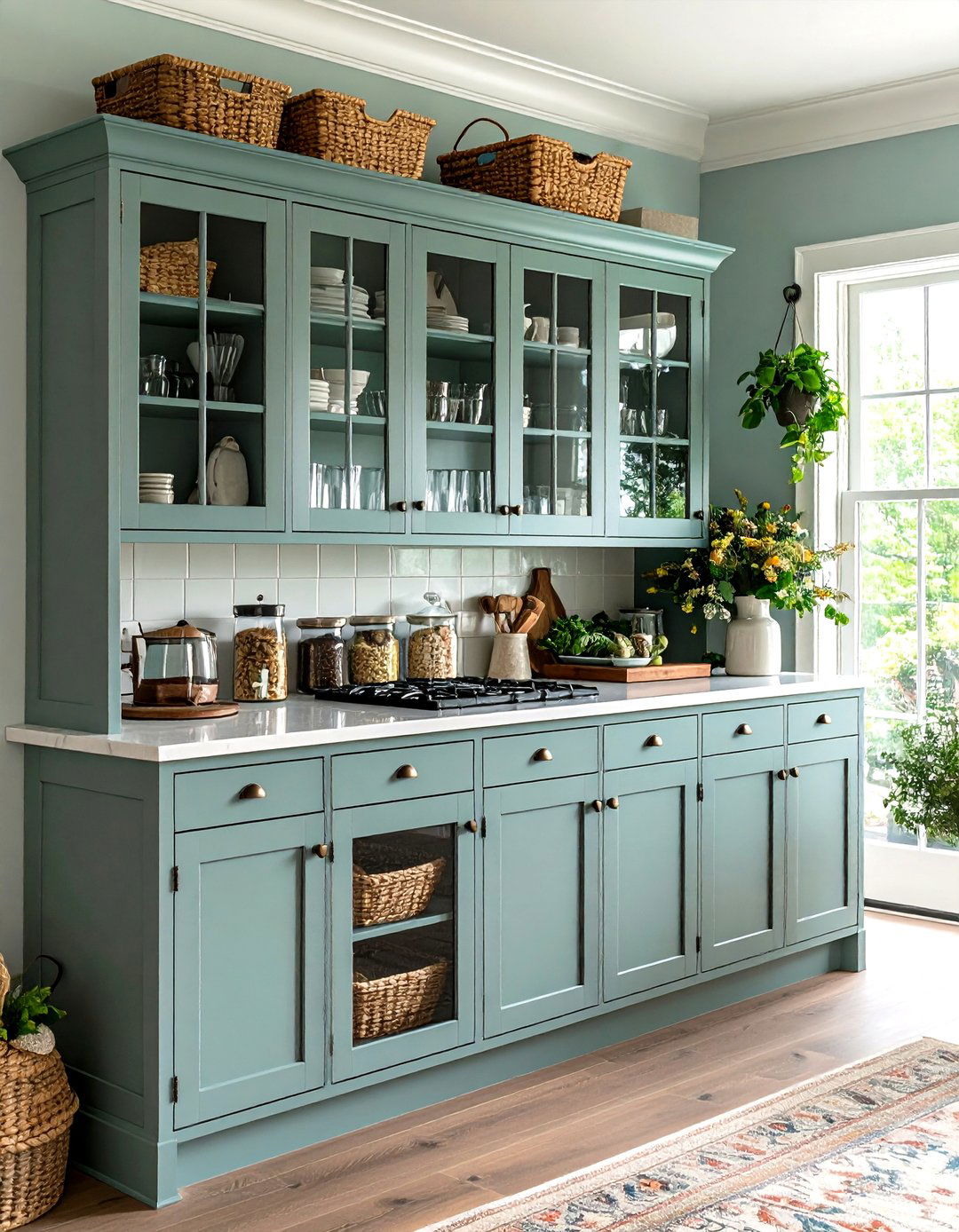
Replace run-of-the-mill pantry cabinets with a freestanding armoire or glass-front hutch painted dove grey. Vintage hardware, rippled glass, and crown molding lend provenance impossible to fake. Use adjustable shelves for stacked ironstone dishes and woven bread baskets, and hide unsightly appliances behind lower solid-wood doors. Because the piece reads “furniture,” it relaxes the footprint, allowing the French Country Kitchen to spill gracefully into adjoining living areas. Slide a slim library ladder along a ceiling-mounted rail for top-shelf access and additional charm.
17. Potted Herbs Bring Fragrance to a French Country Kitchen Nook

Fragrant thyme, rosemary, and lemon verbena planted in clay pots do triple duty: flavoring meals, purifying air, and adding green punctuation against neutral walls. Vertical racks or hooked planters maximize small footprints, echoing Provençal garden ingenuity. Cluster them by a sunny window so brushing past releases essential oils. Slip saucers beneath to protect stone sills, or line wicker trays atop counters for movable herb islands. In any French Country Kitchen, this living décor underscores the style’s tight bond between garden and table.
18. Wicker Baskets Offer Hidden Storage in a French Country Kitchen
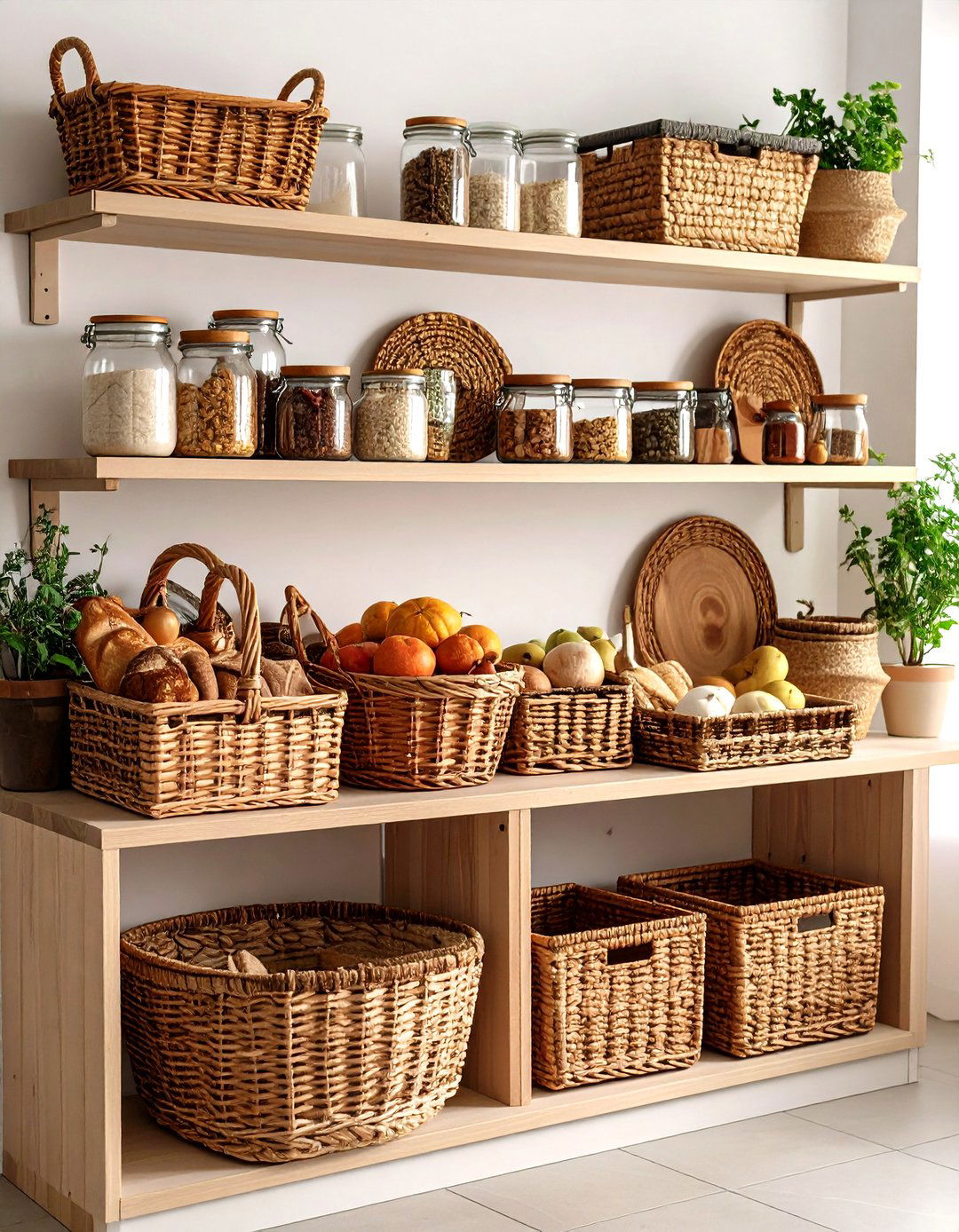
Deep willow or bankuan-rope baskets slide into open shelves, corral linens, and add instant rustic texture. Current storage trend lists champion attractive woven options that needn’t be hidden in closets. Their honey tones tie disparate wood finishes together and soften the inevitable parade of enamelware and cast iron. Keep basket shapes varied—round for onions, rectangular for napkins—so the arrangement feels organic. Because baskets breathe, they suit produce better than plastic bins, reinforcing the practical ethos of a French Country Kitchen.
19. Mismatched Cabinet Colours Keep a French Country Kitchen Relaxed
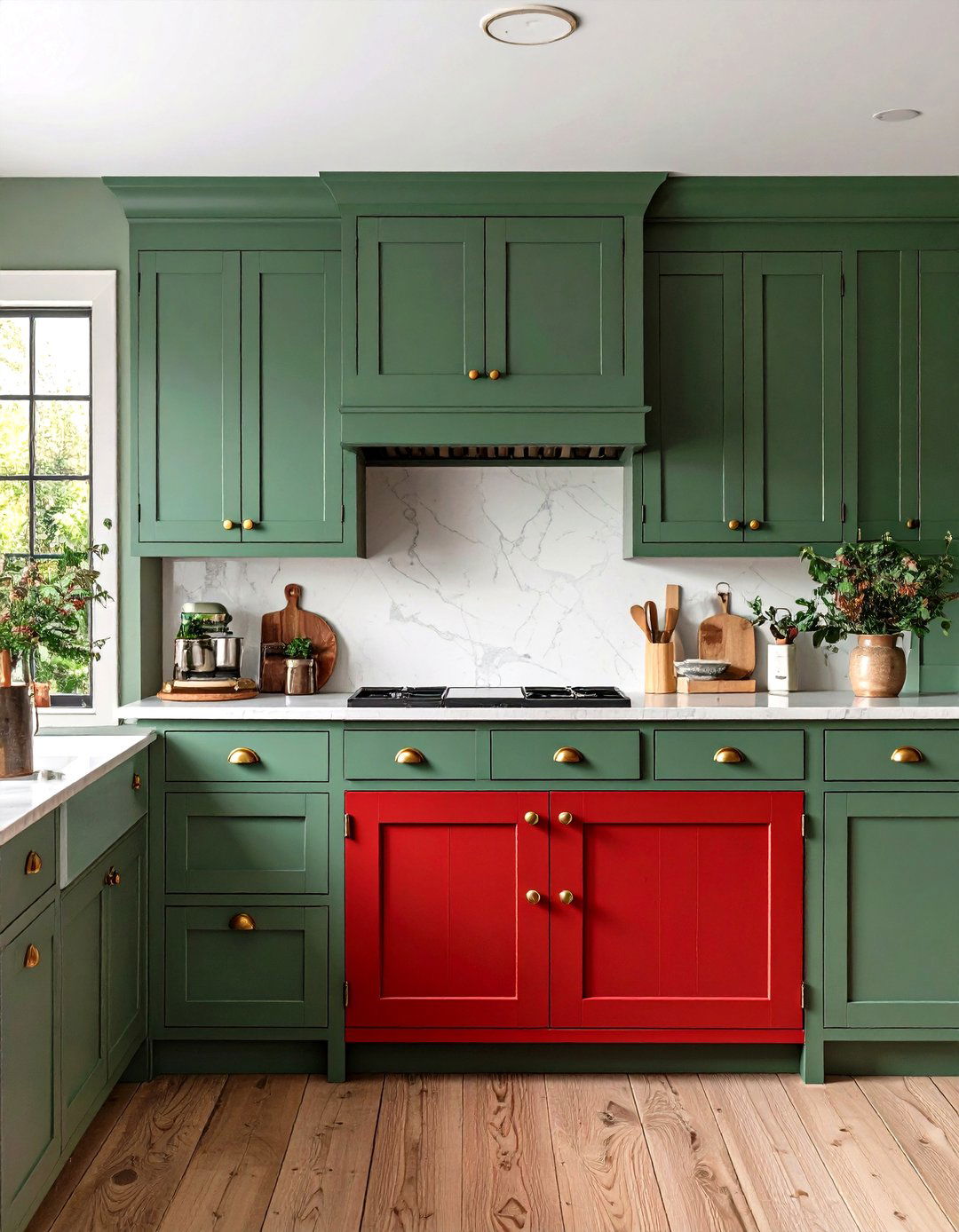
Uniform perfection feels urban; countryside homes evolve layer by layer. Designers purposely paint upper cupboards in muted mushroom and lowers in weathered sage, or dedicate a larder door to barn red. Slight variation suggests pieces inherited at different times. Tie the scheme together with identical aged brass knobs and continuous marble counters. For the adventurous, swap one door for wire mesh or chicken-wire panels, nodding to farm storage. Embracing imperfection ensures a French Country Kitchen looks authentic—and forgiving when life inevitably scuffs another corner.
20. Layered Natural Textures Complete a French Country Kitchen Story
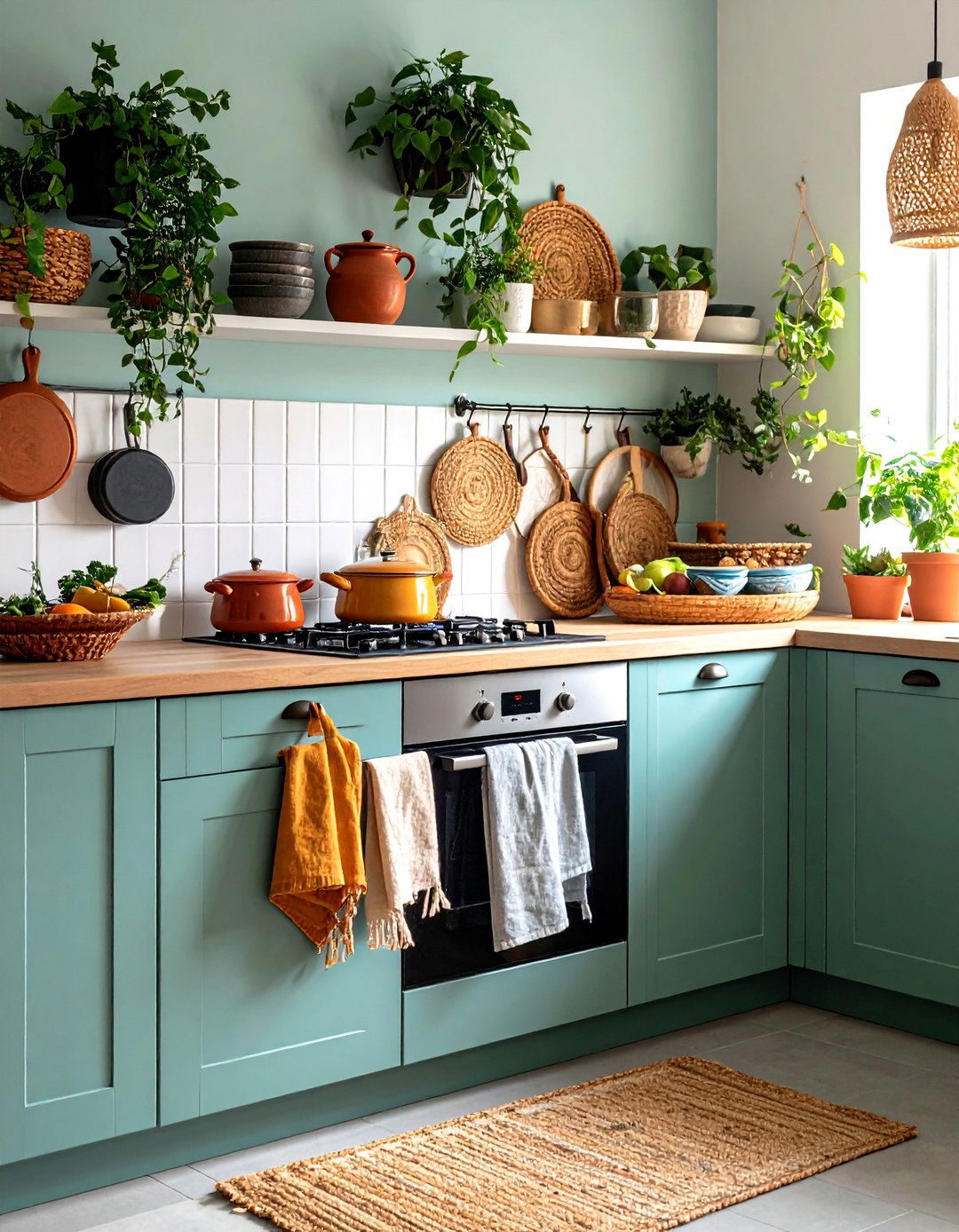
Finally, sprinkle tactile layers—linen tea towels, stoneware crocks, iron trivets, seagrass mats—over every surface. Rich material mix is the quiet thread unifying earlier ideas, from beams and baskets to patinated brass. Rotate textiles seasonally: ticking stripe in spring, heavyweight wool runner in winter. Because French Country Kitchens prize sensory comfort, let no area feel flat. Even sleek appliances benefit from a folded flax towel draped nearby, ready for bread rising. When every element carries honest texture, the space glows with lived-in charm that photographs struggle to capture, yet guests feel immediately.
Conclusion:
Borrowing just a handful of these ideas—whether limestone floors or simple café curtains—can usher Provençal warmth into any home, apartment, or city loft. By pairing muted neutrals with storied metals, layering reclaimed timber over cool stone, and weaving in garden herbs alongside patinated brass, a French Country Kitchen becomes less a decorating exercise and more a lifestyle that celebrates craft, convivial meals, and objects that grow lovelier with time. Gentle evolution, not perfection, is the secret that keeps this style perennially welcoming and effortlessly chic.



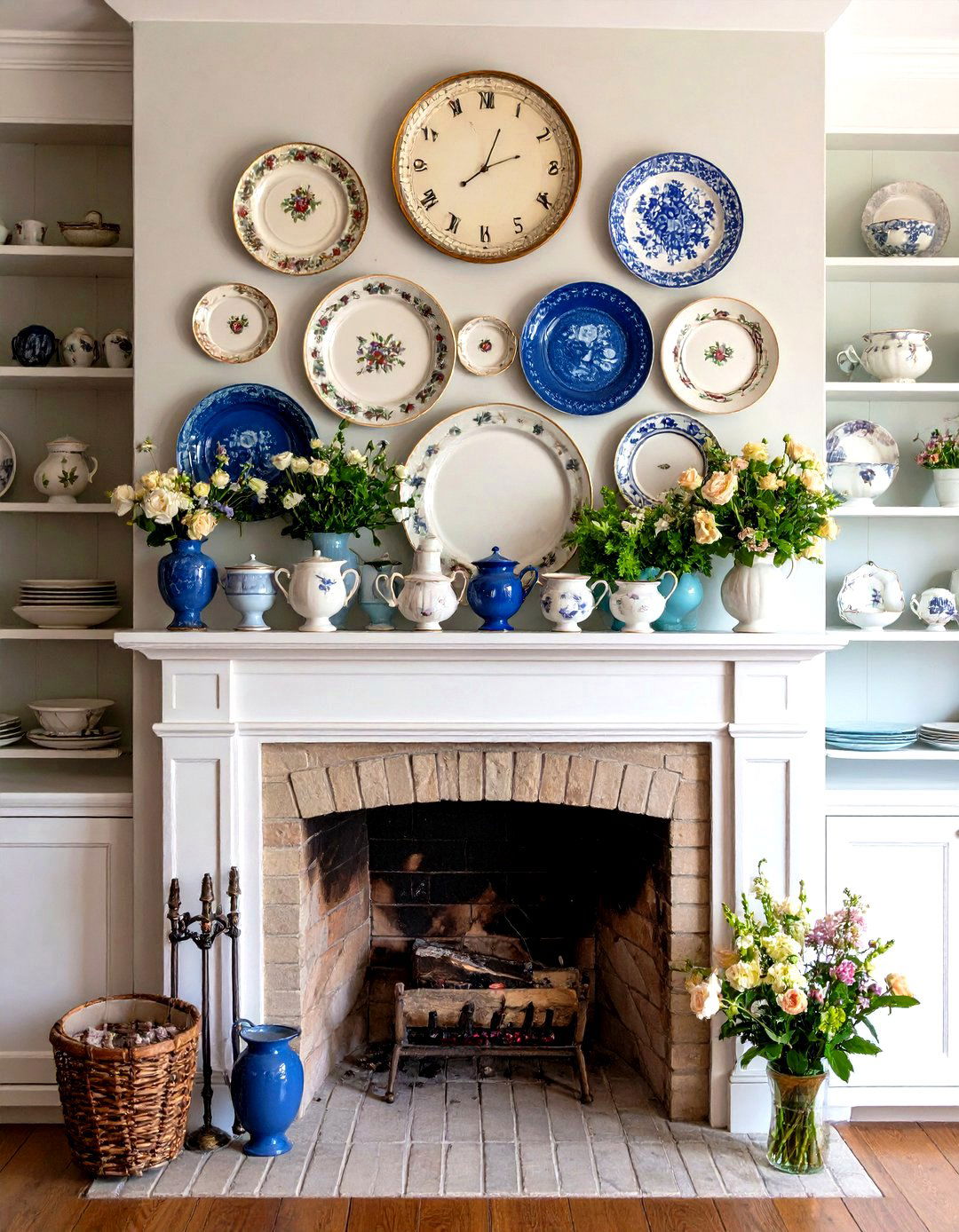
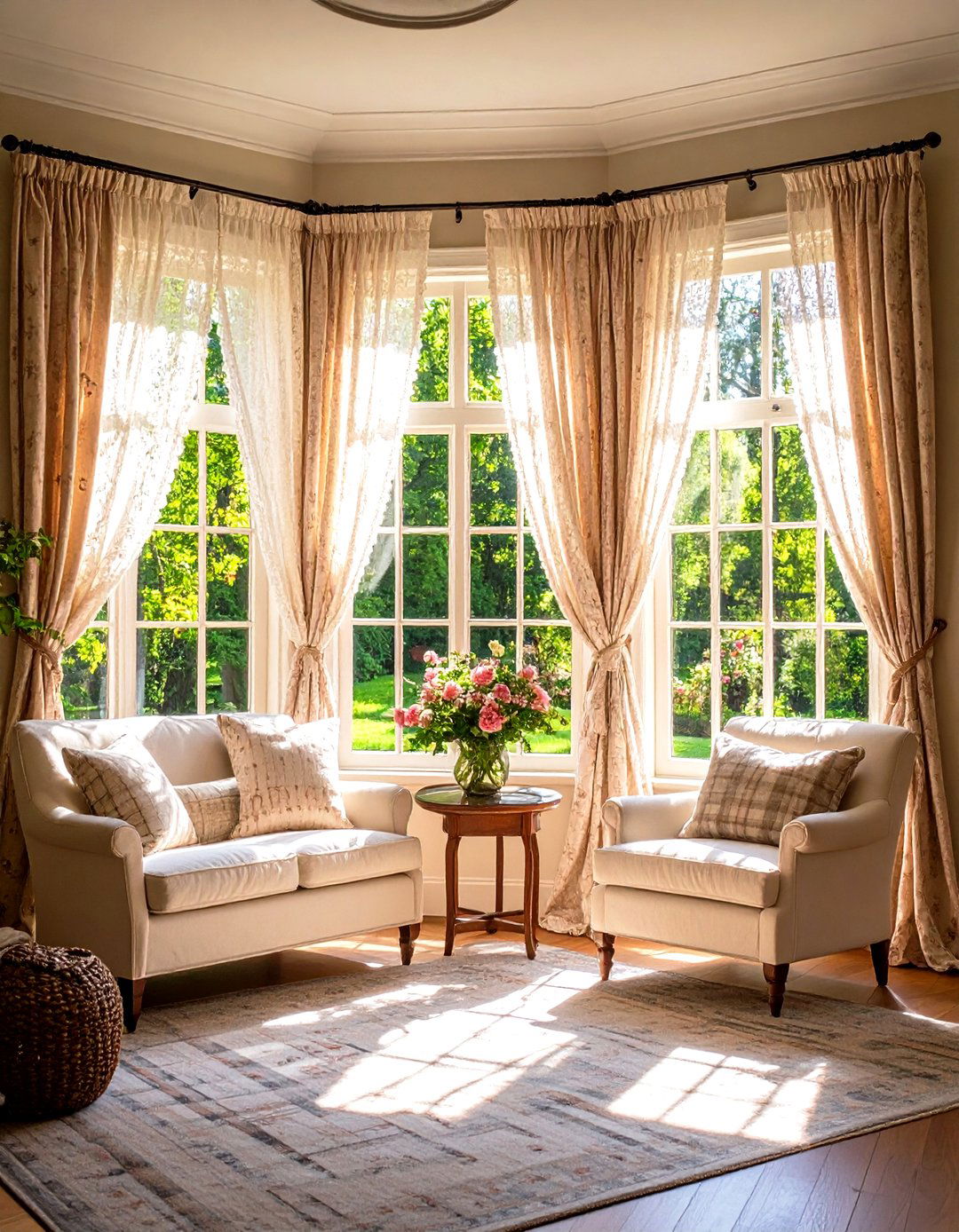
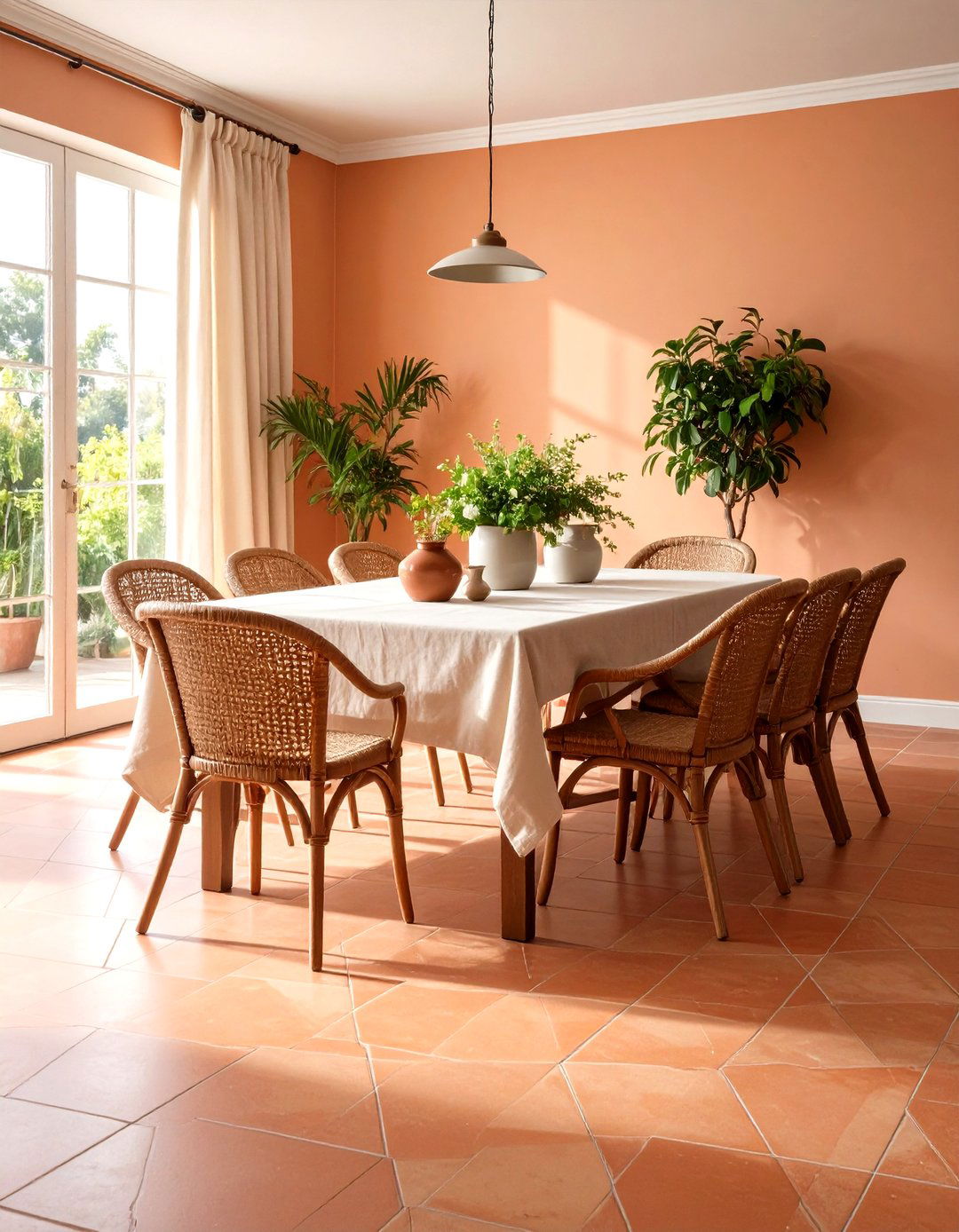
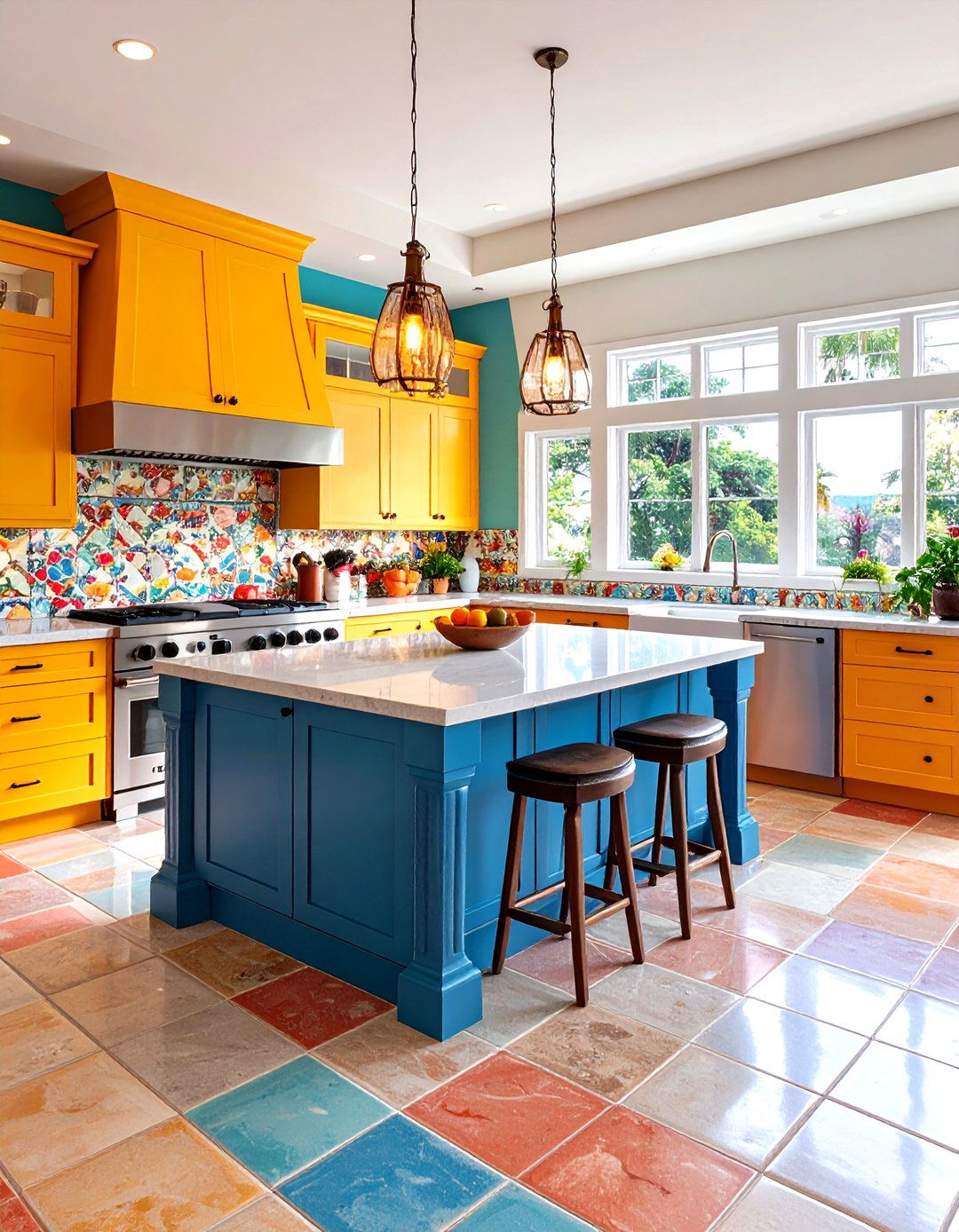
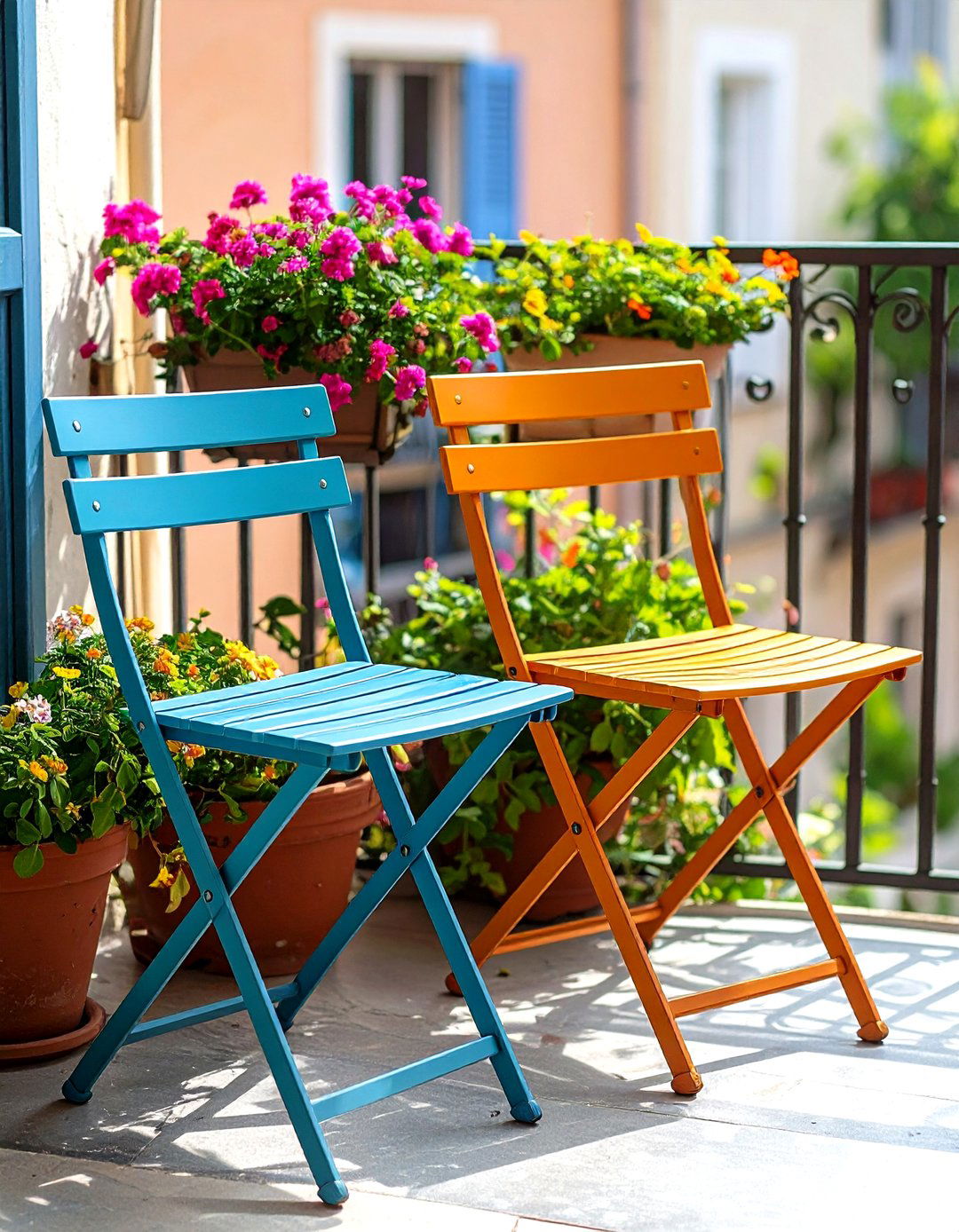
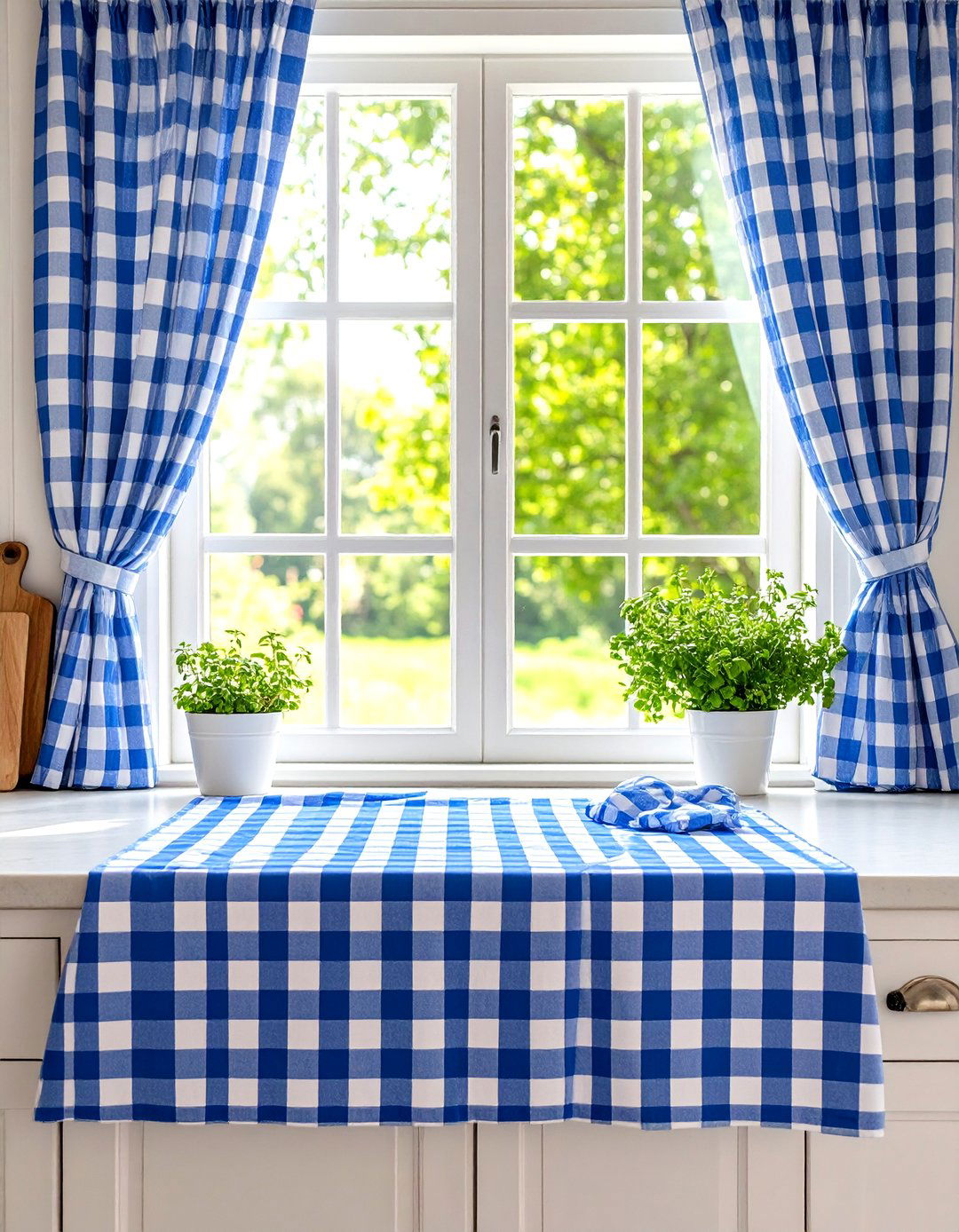
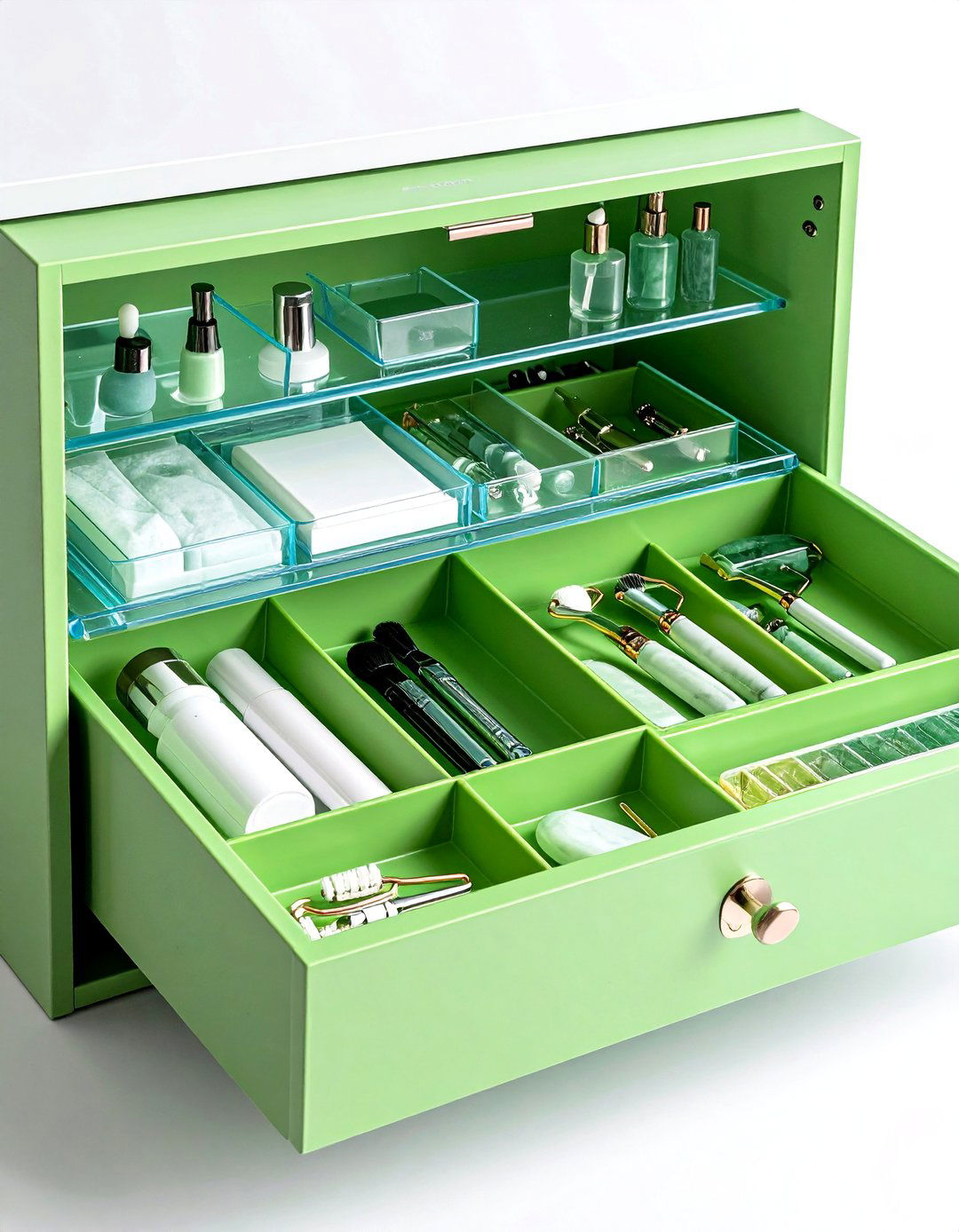
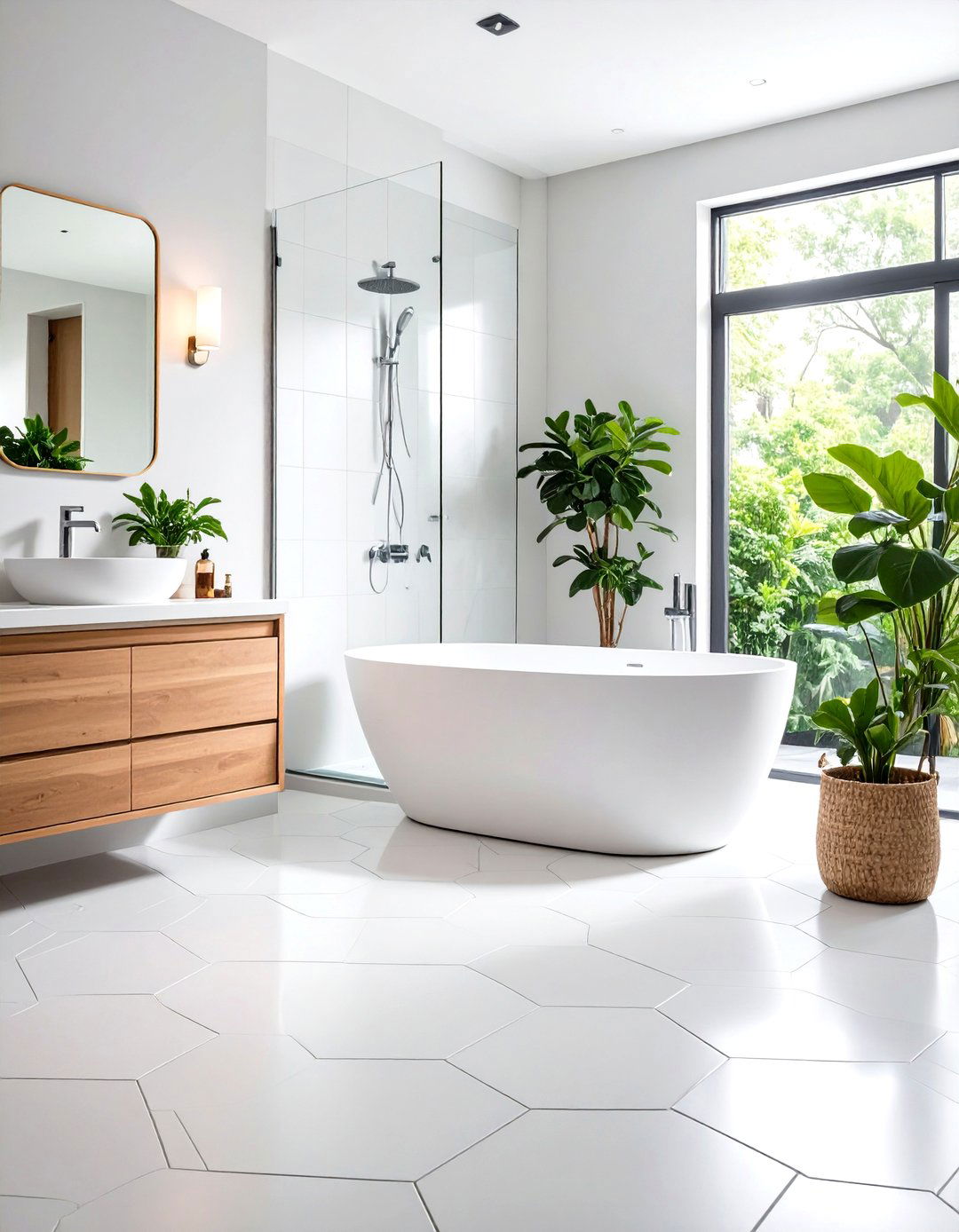
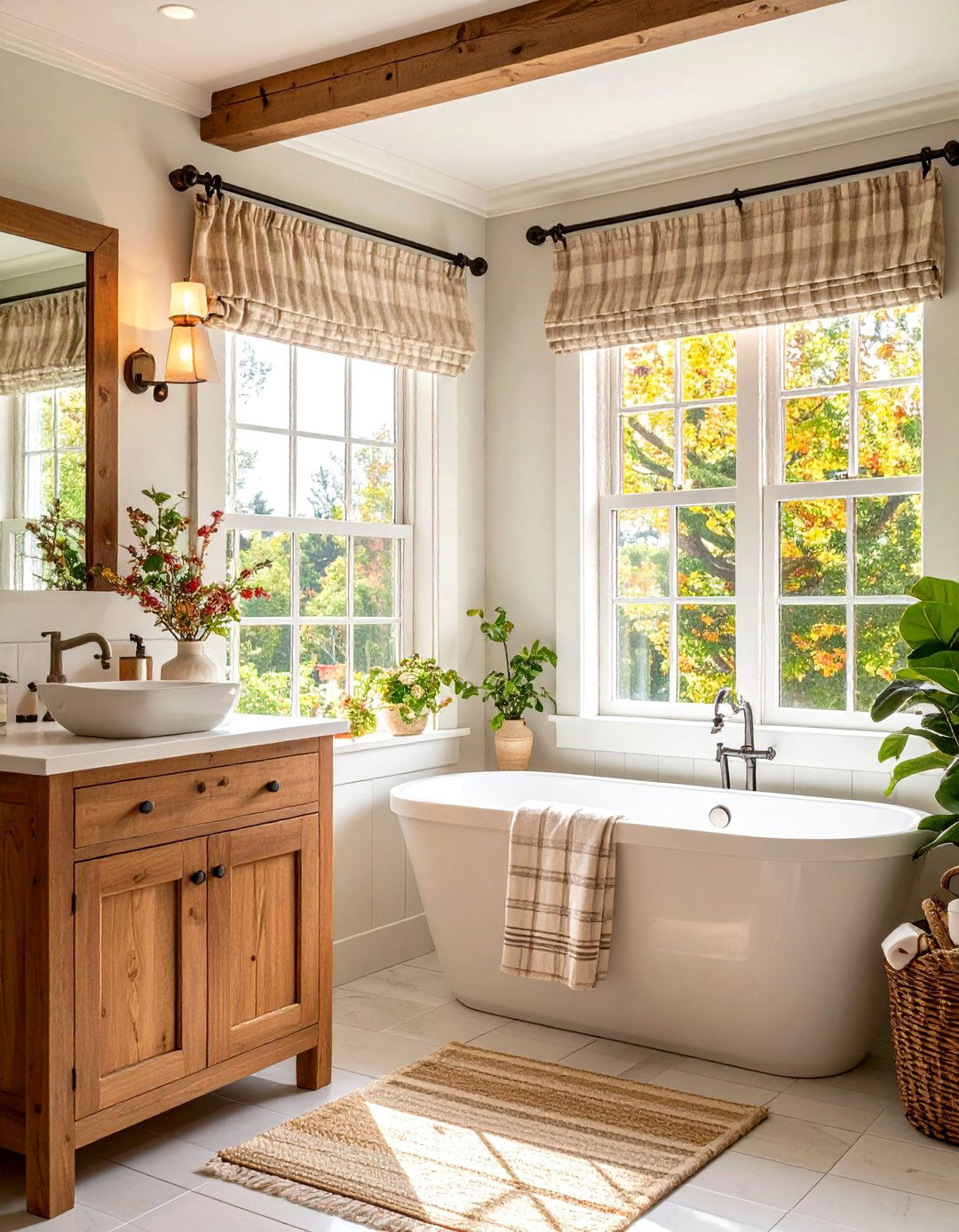
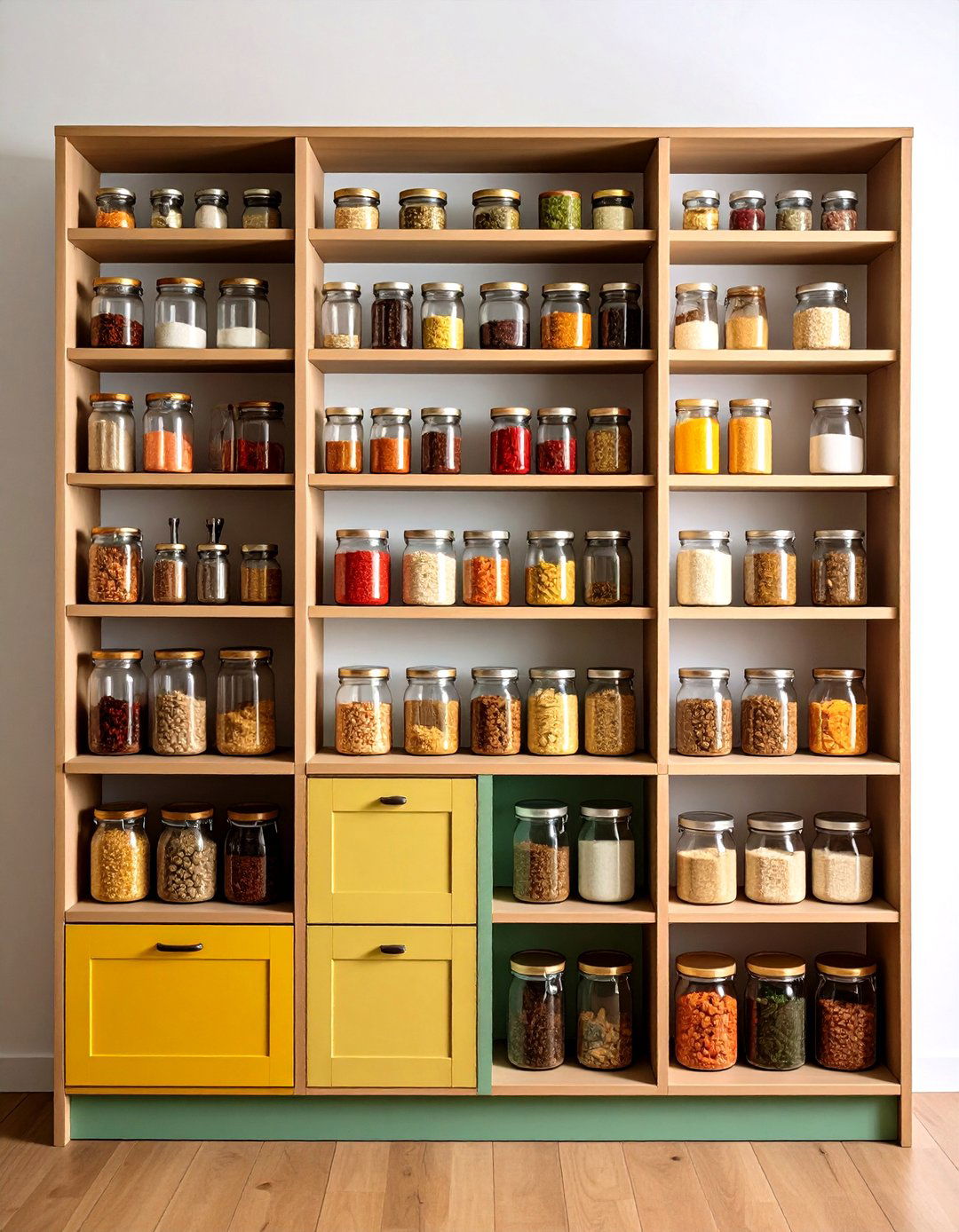


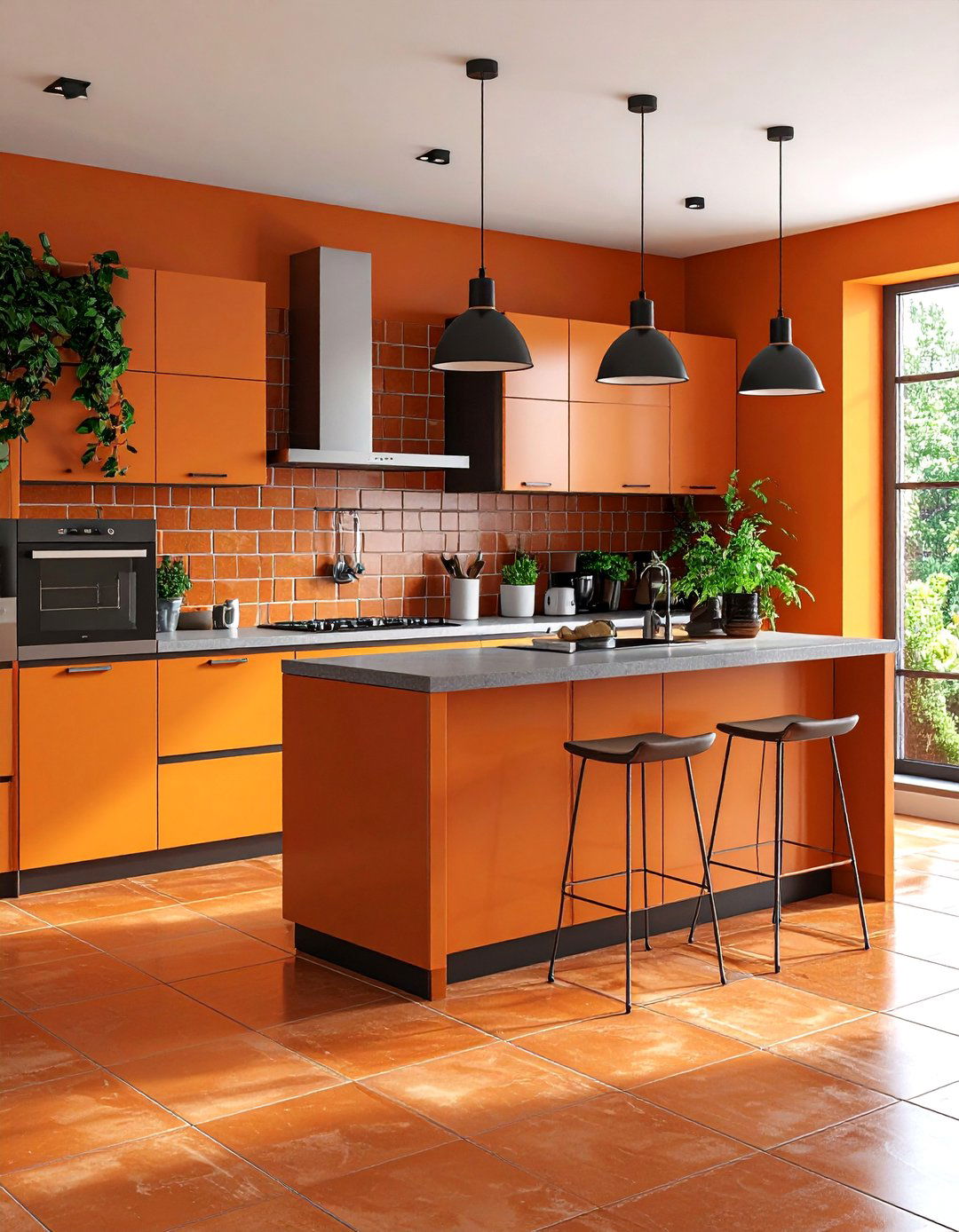
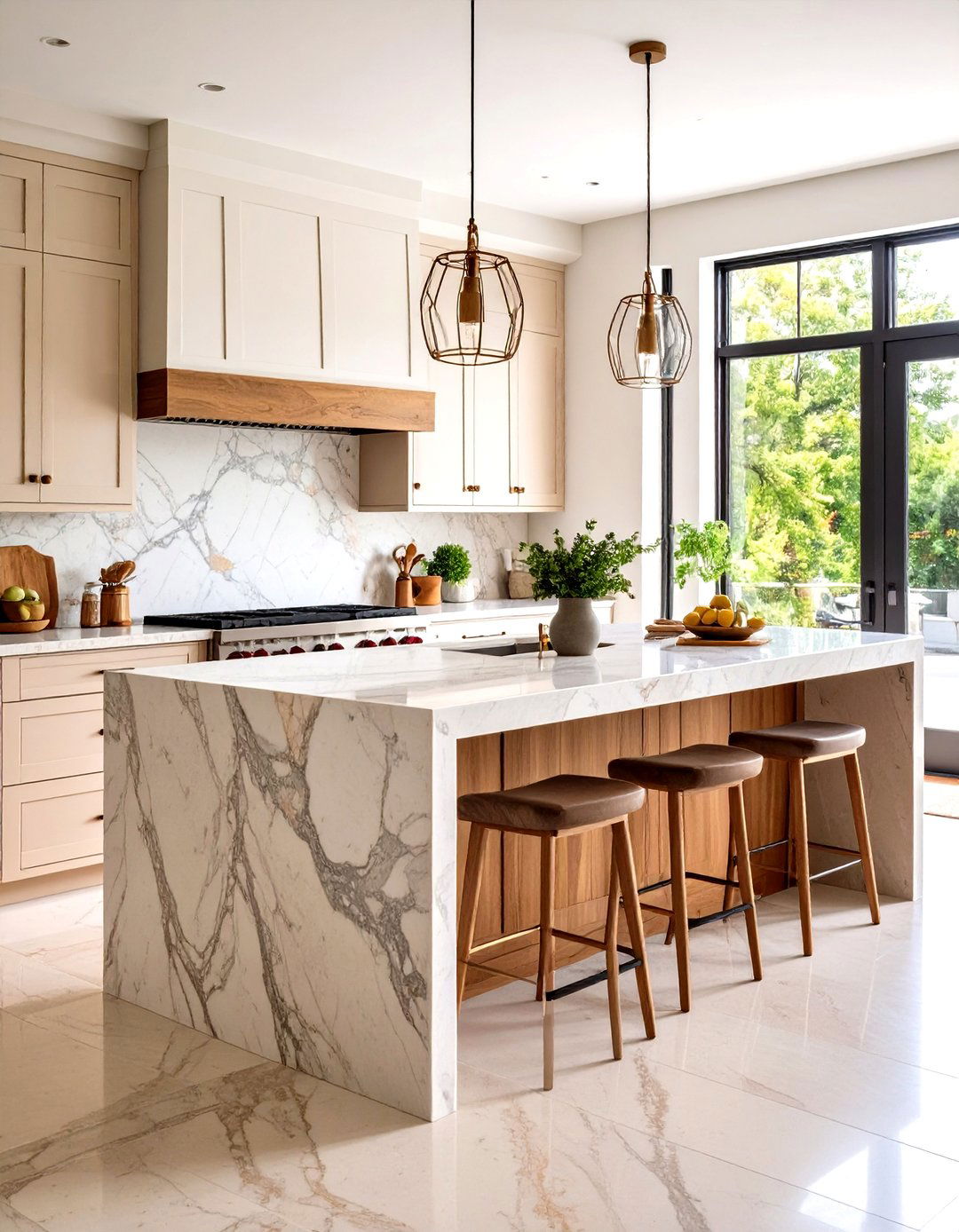
Leave a Reply